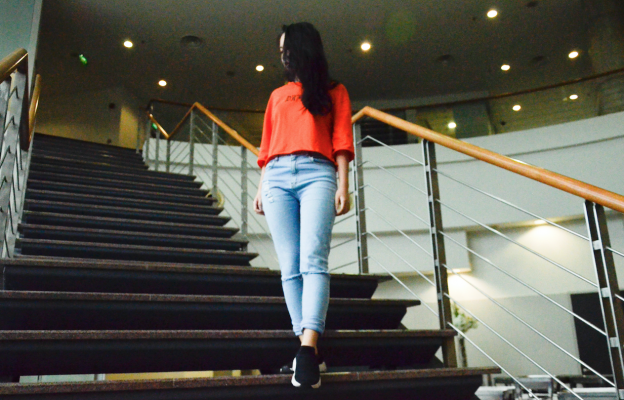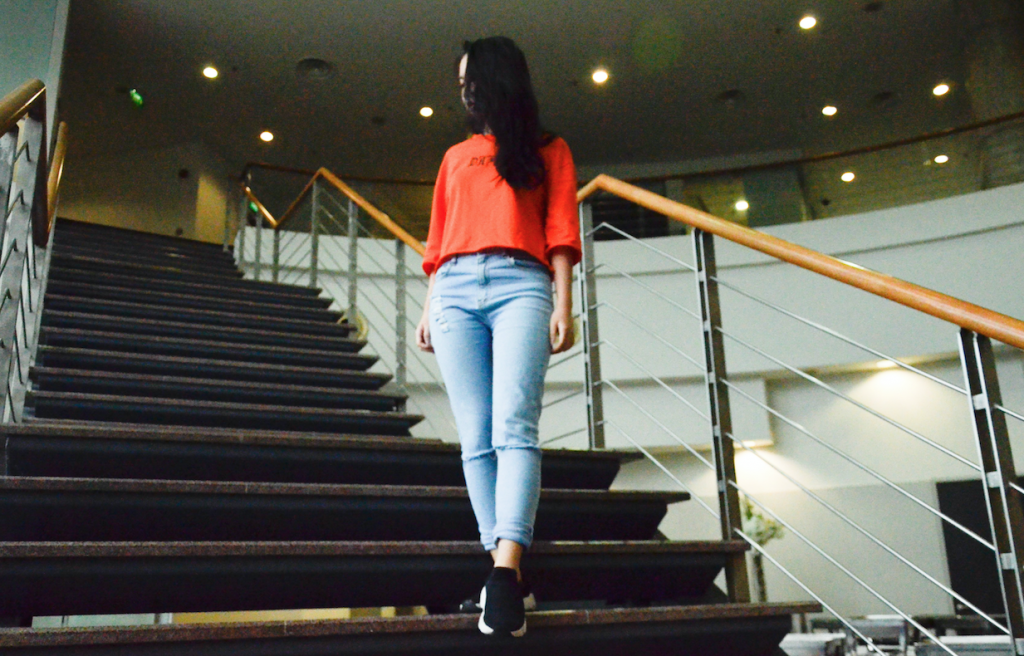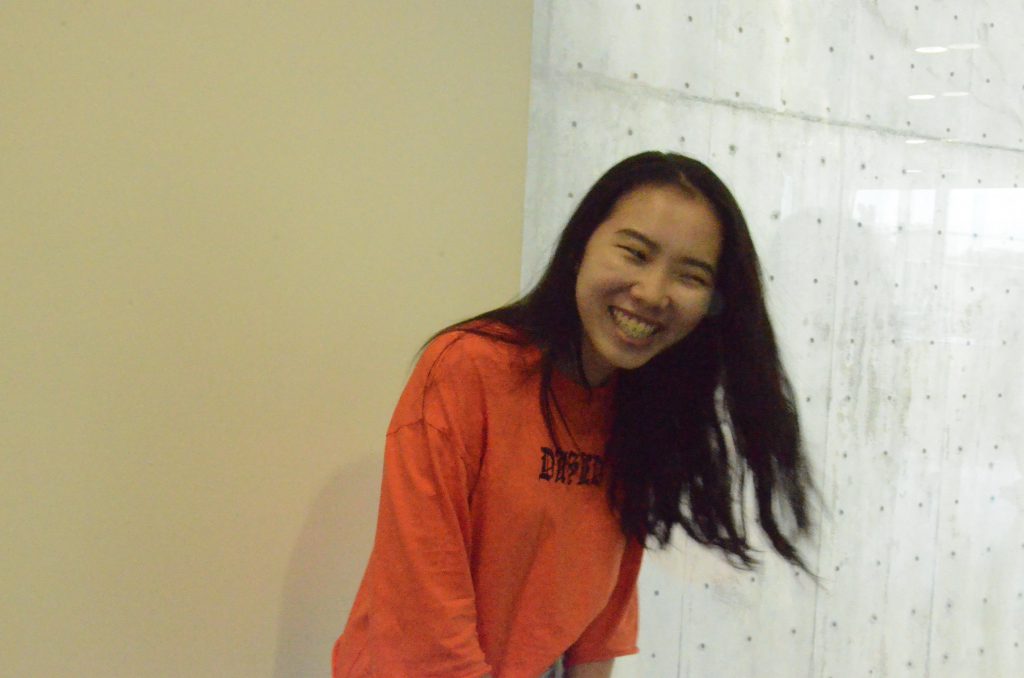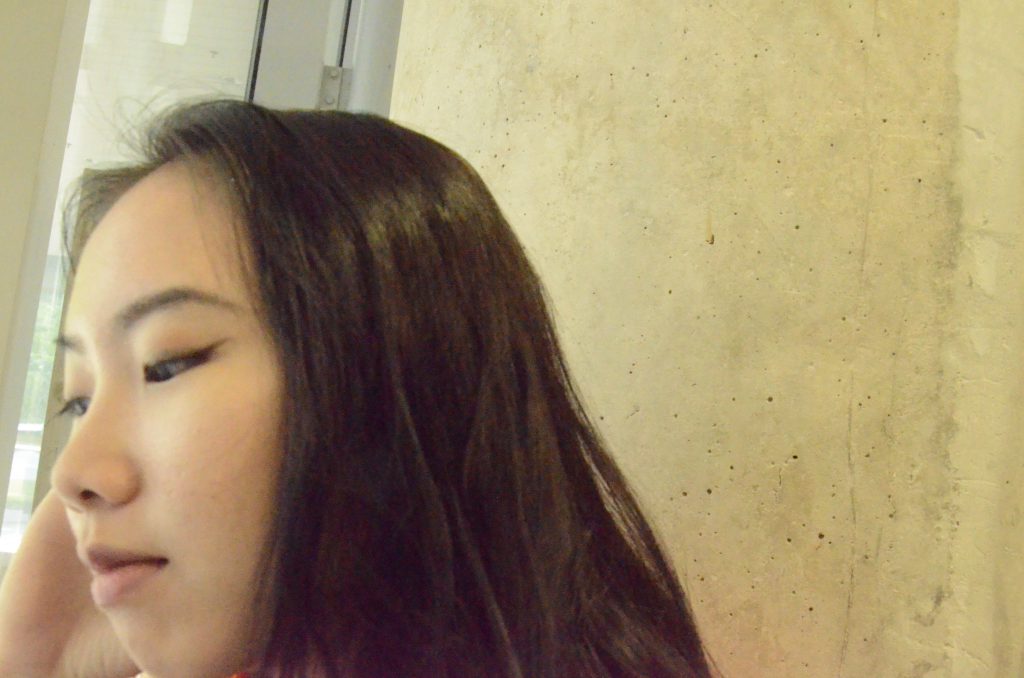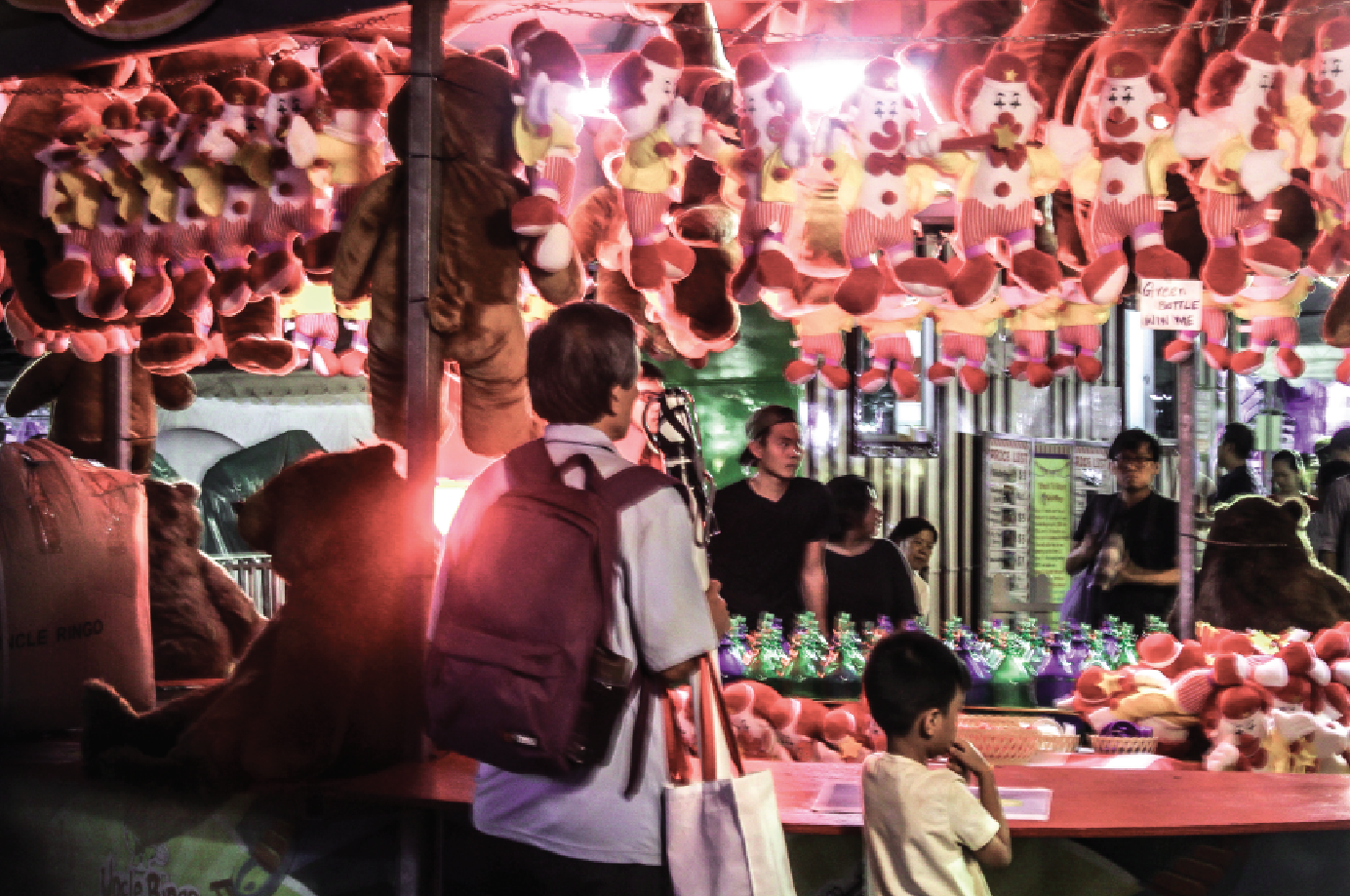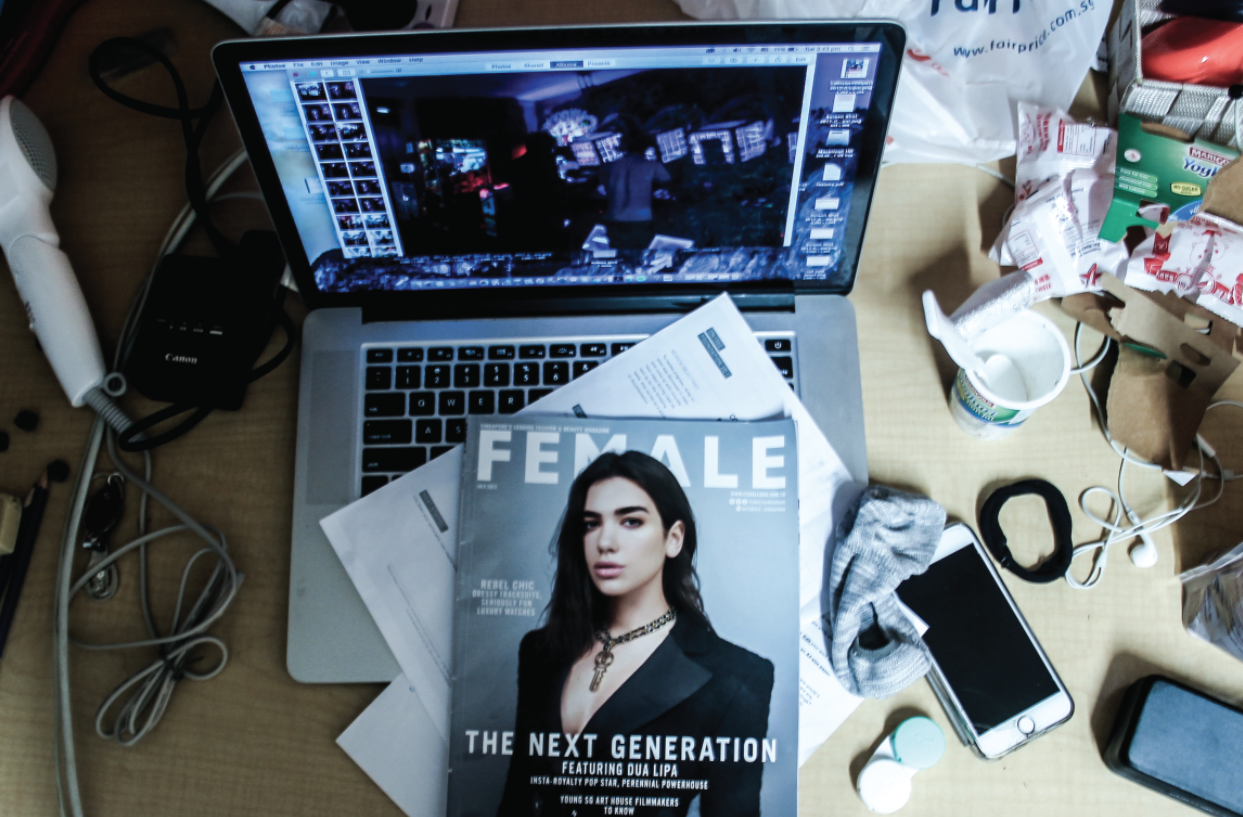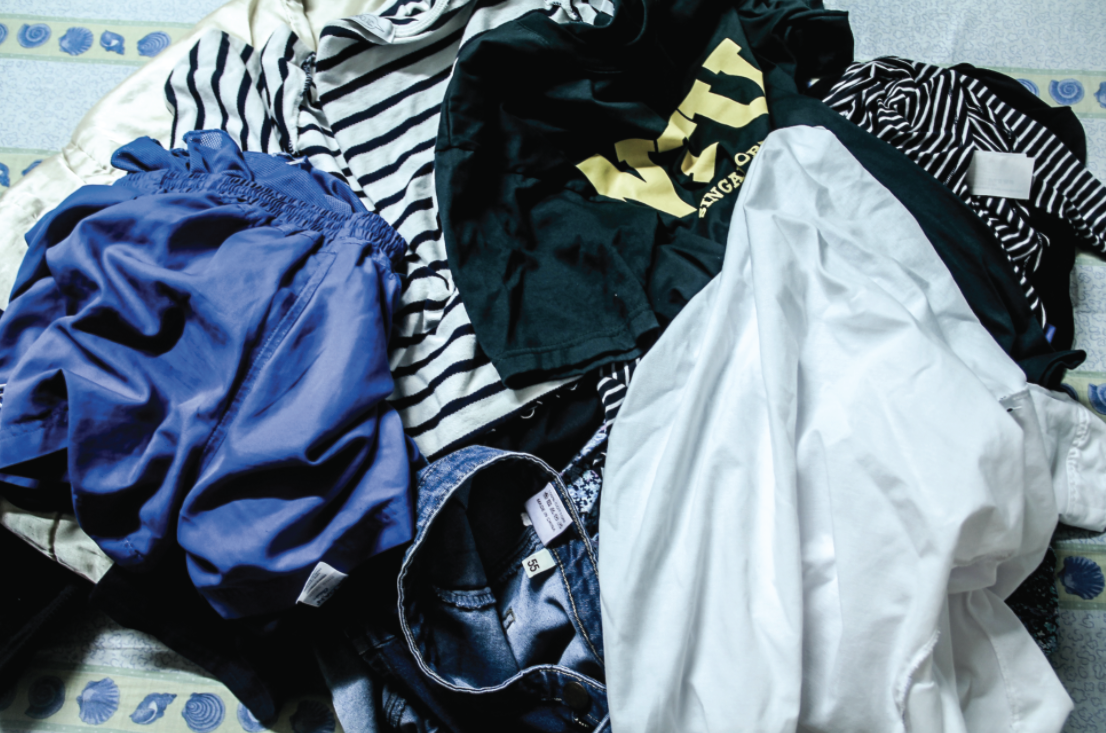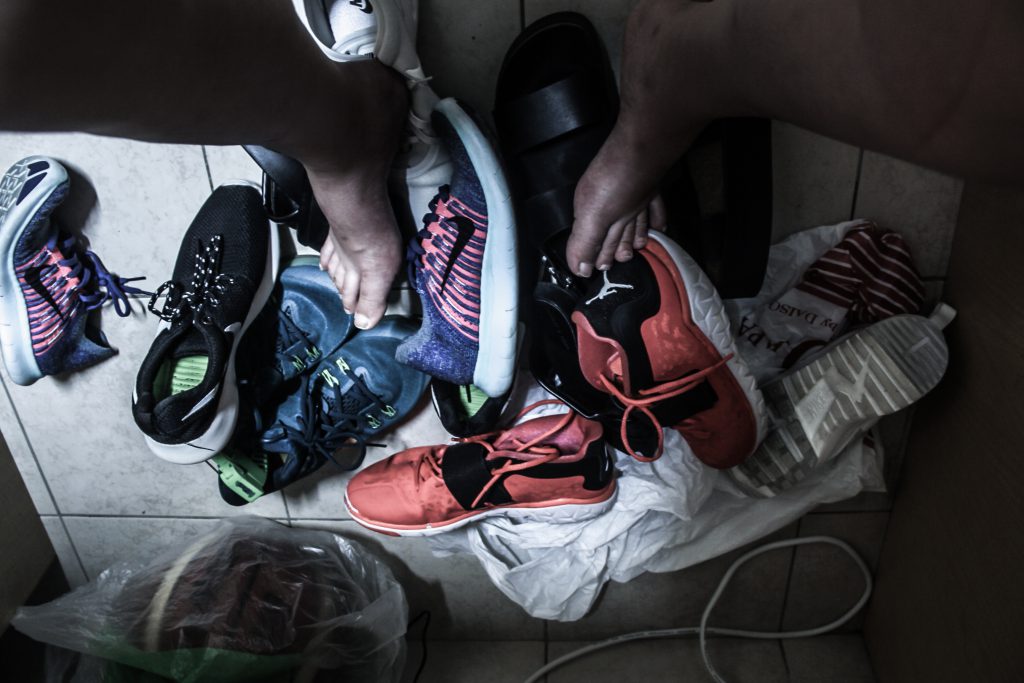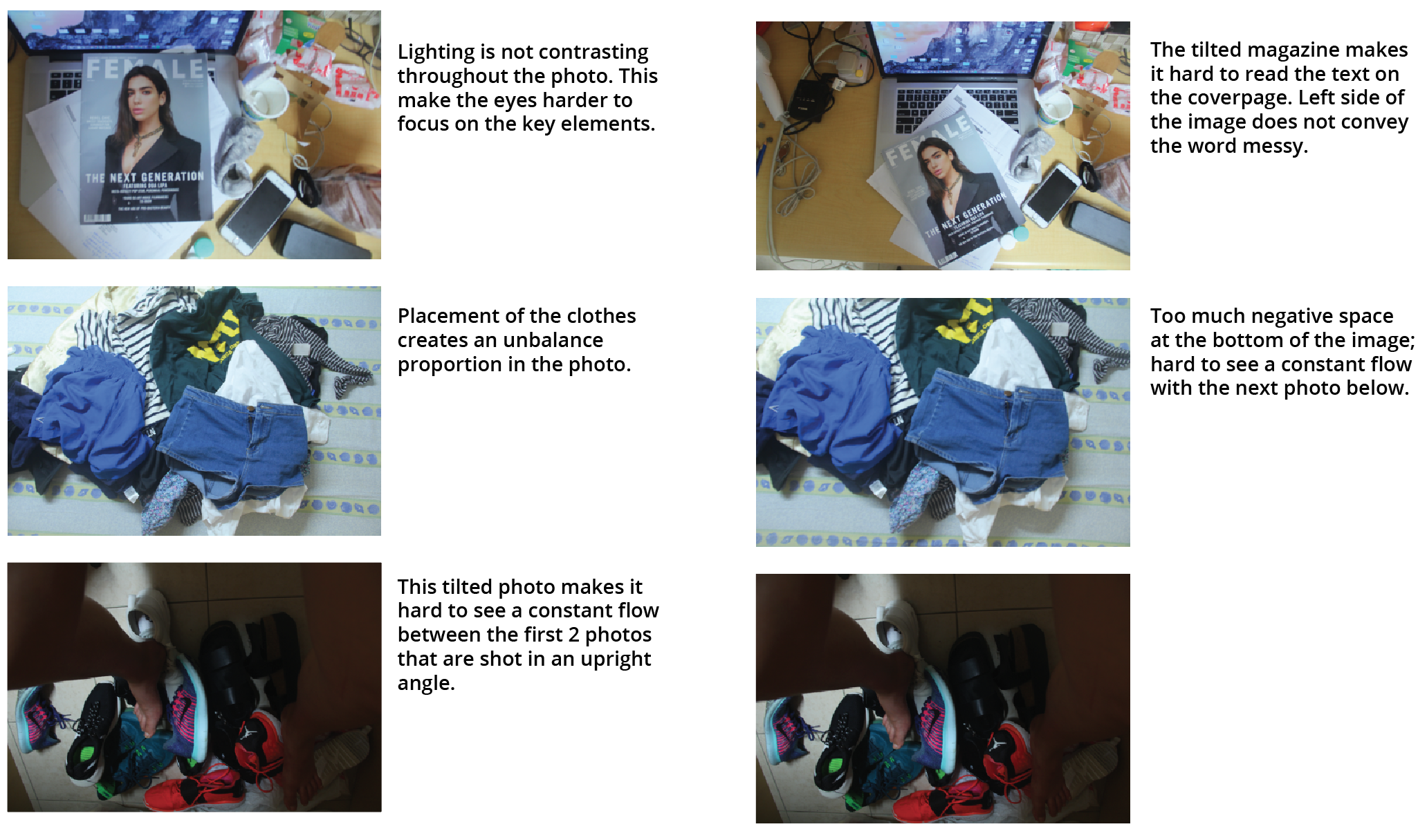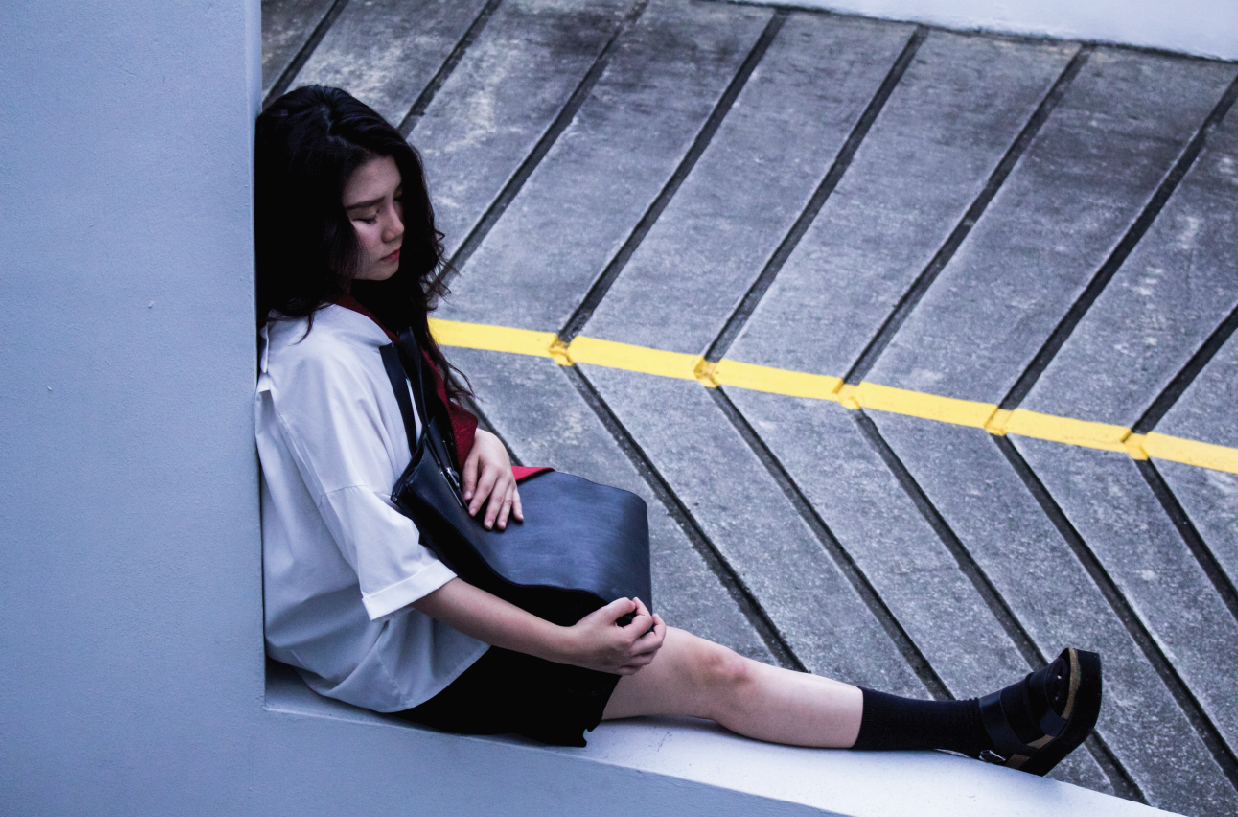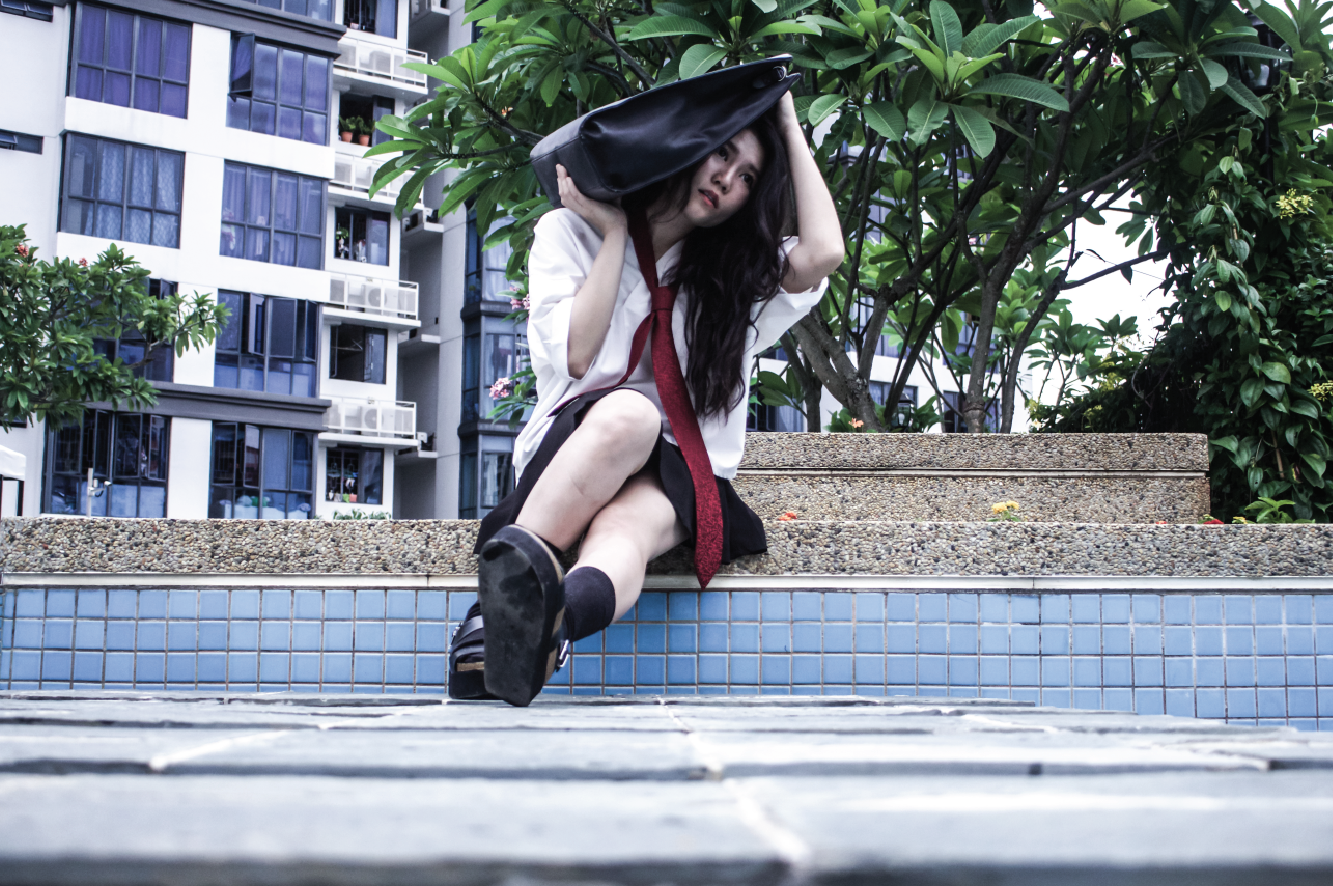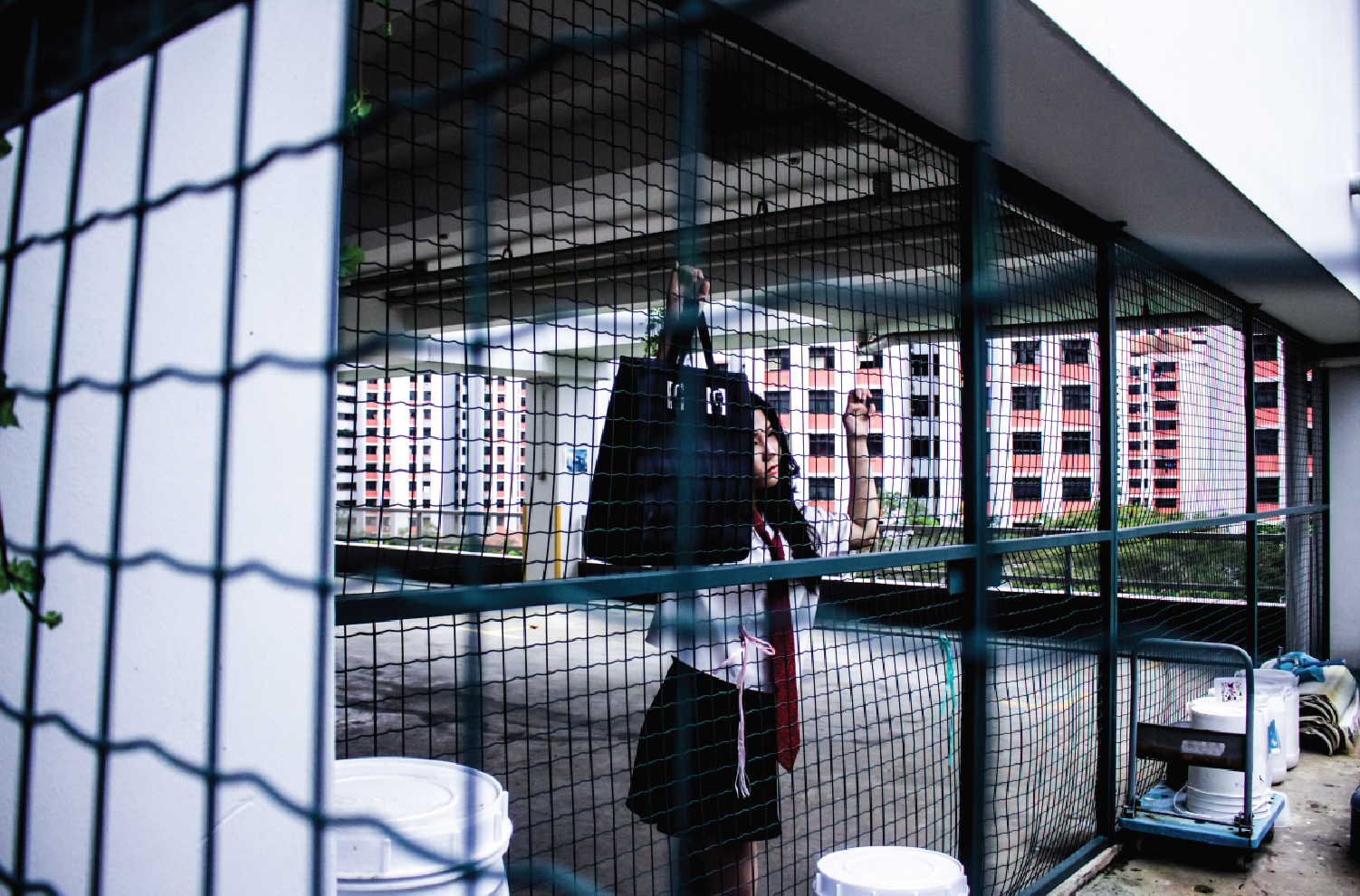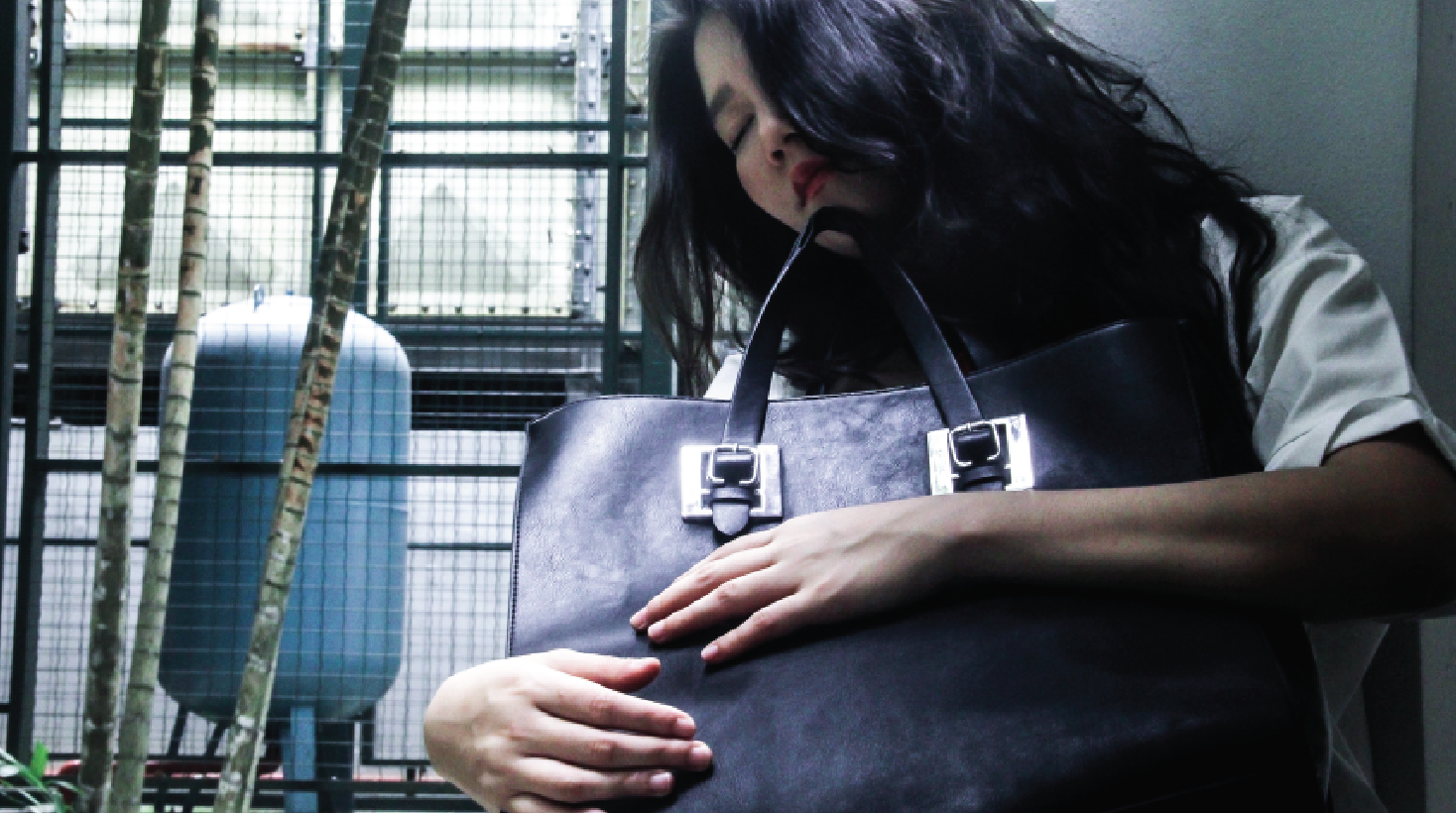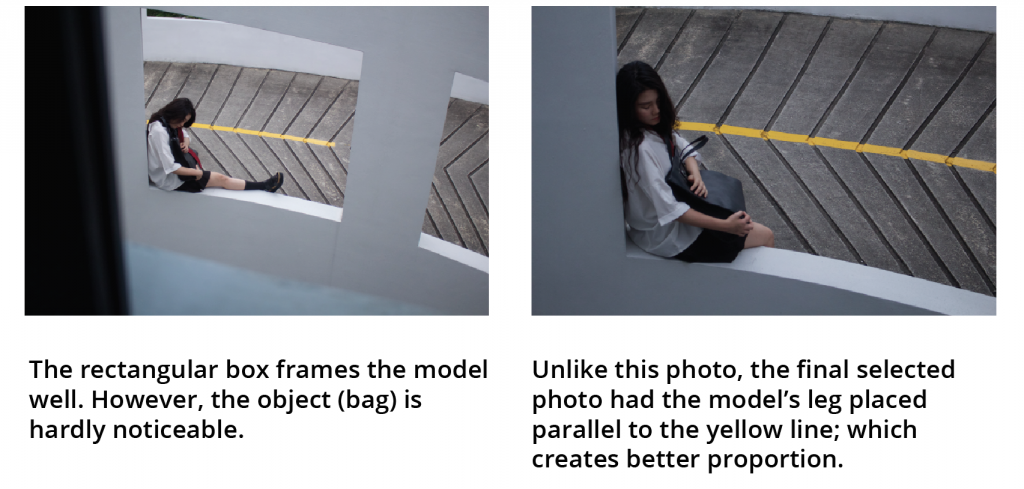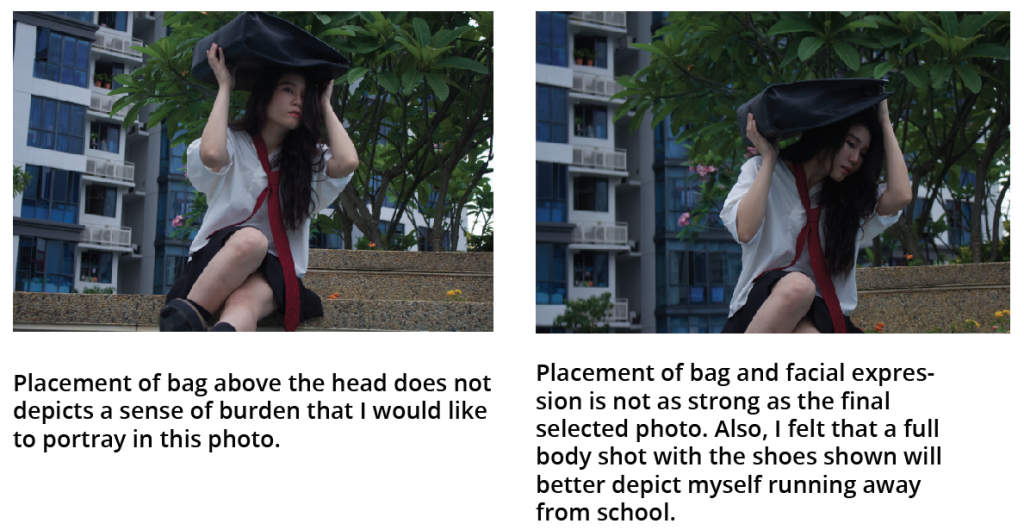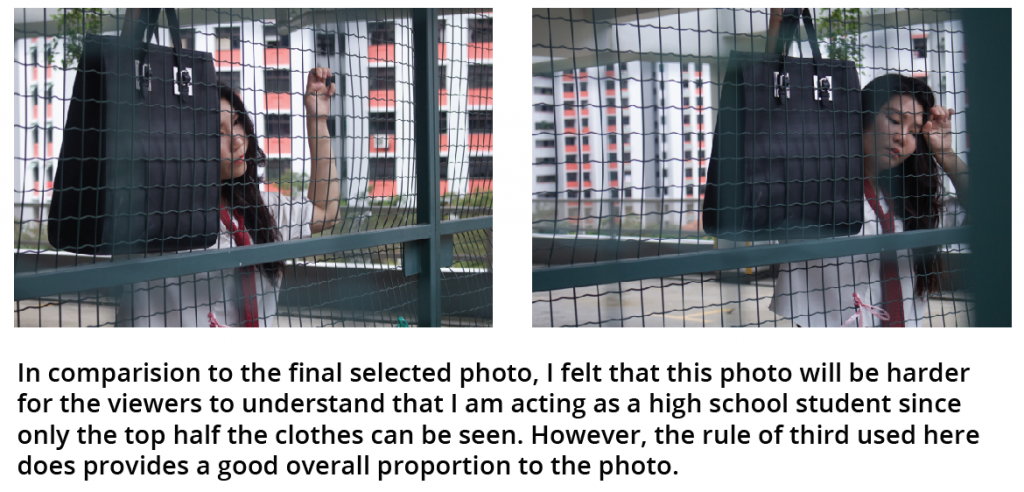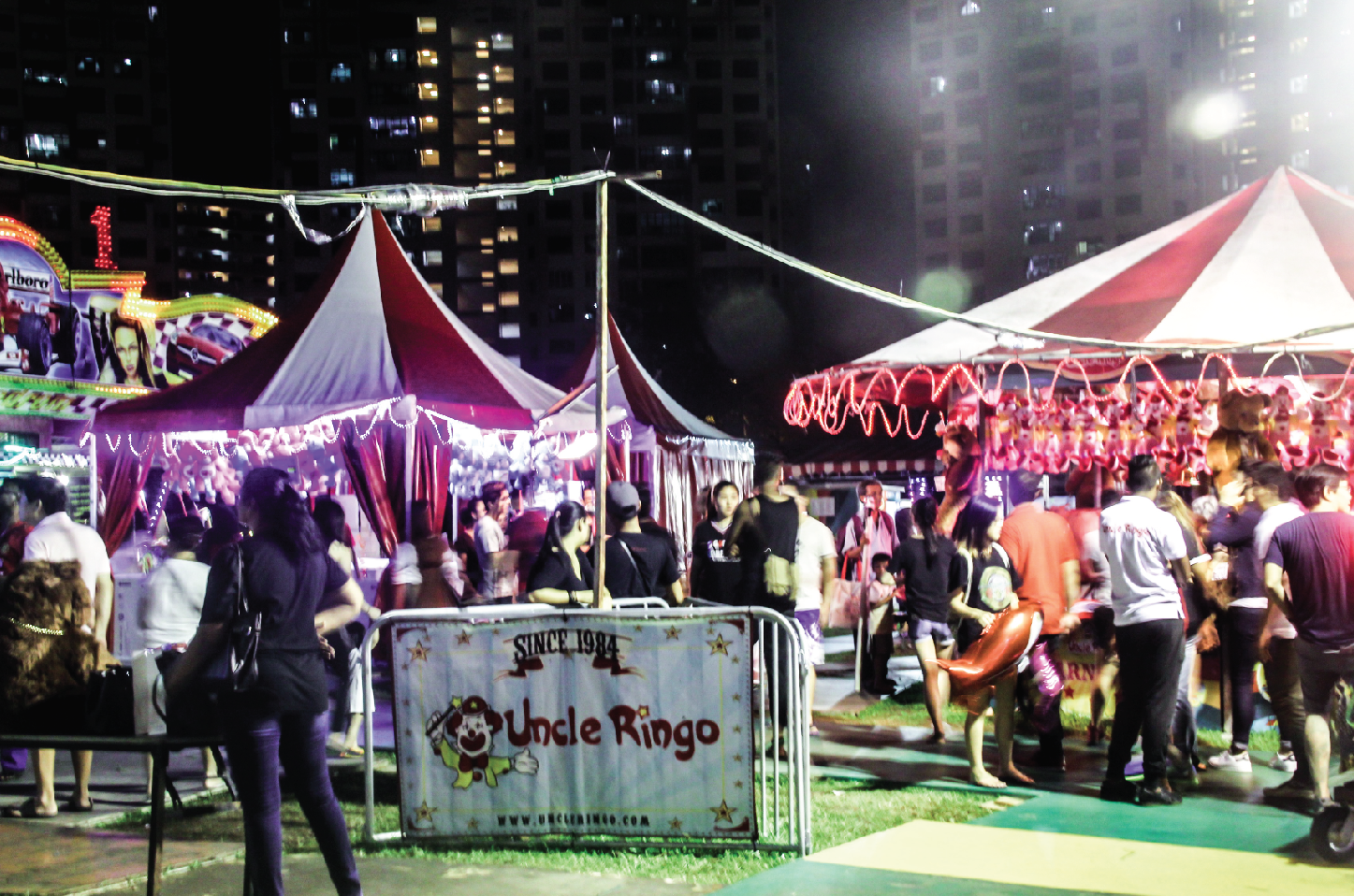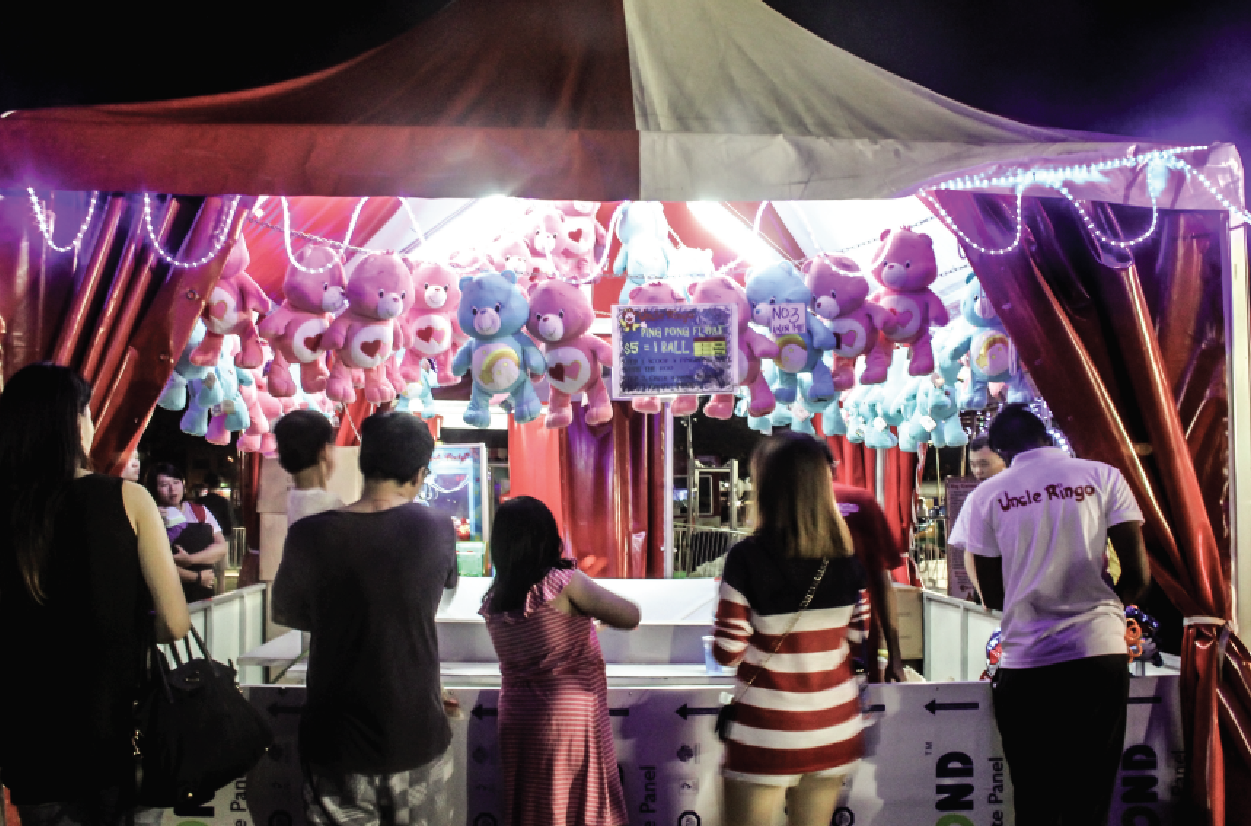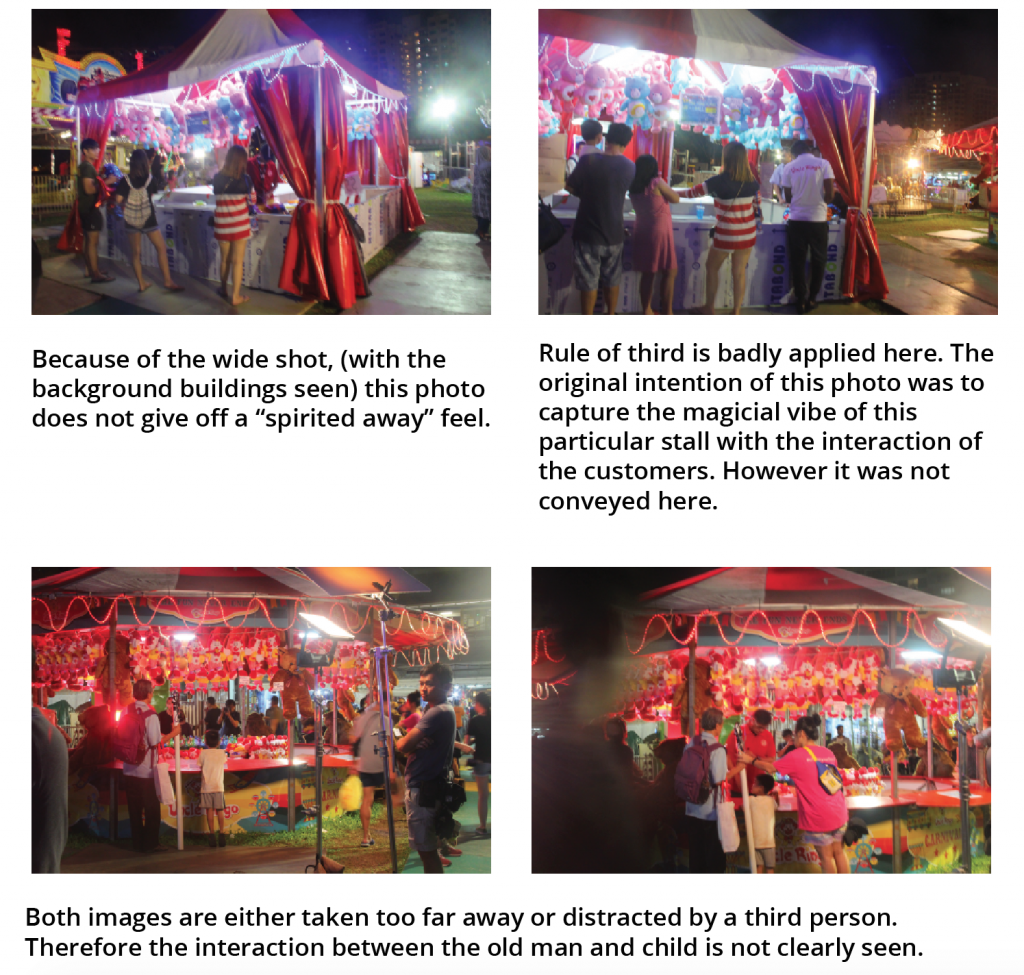When the brief for project 4 was released, I knew I wanted to do something that relates to our daily lives that revolves around the idea of time and space.
Original Idea
The original idea for the final project was to film a video; a depiction of how a short everyday act / situation seems like a long process; because of how the situation triggered and impacted on the individual. It will be a simple act, in video form, of a slow process of a person entering a toilet cubical. As he/she took off her/his pants, music starts to play, and a dance/ movement / body language is shown to depict the process of “struggling’ to take a dump. It revolves around the idea of “Expectation vs Reality”. How people perceive things in the back of their mind and how it actually look and feels when shown directly upfront.
In the video, I wanted to use projection as a background effect to enhance the long and painful thought process of taking a dump through the visuals and lightings from a projector. However, there are a few circumstances that made this idea a failed one. Firstly, to be able to film a person’s body movement in a cubical required a huge amount of distances from the projector to the toilet bowl.
As experimented from the distance in my room, from the distance from the projector to myself is about 4 meters. Having say that, the screen is only able to project onto the top half of my body. Besides, it was hard to find a cubical with this amount of distance for projection.

^ About 4 meters from wall to projector
Next, due to technology advancement, the lights from the toilets are often operated through sensor lights. This will cause the projection to not be able to show well as projection only works well in a dark room.
Changed Idea
Because of all the difficulties, I decided not to use the projector.
At this point, I questioned myself what kind of plot do I want to show my audiences. What is it that I would like my audiences to take away after watching my video. I decided to think about my 1st thought process: In the daily life activities that I executed everyday such as eating, shitting, and bathing, I will always require some sort of entertainment to keep myself entertain. In a way as though I wouldn’t feel as if I was doing something boring in a confined space for a long time. From here, I know that I wanted to do comparison video that shows the difference in edited time and running time. From this video, I would like my audiences to appreciate time more, to know that they can actually do multiple things at a time in a confined space.
Final Execution
In this video, scenes were broken down into different cuts. The video placed in the middle is a depiction of how I spend my time in the toilet to take a dump. This video is shot in running time, where it shows my actual reactions while I took a 3-4 shit in the toilet with no edited scenes.
The videos at the other 2 ends shows how I perceive time while I engaged in different activities in the toilet. These videos are shot in edited time, where the video is either fast forwarded, or slow downed.
The 1st activity that I engaged in while in the toilet is a phone call. You will notice that when I am talking on the phone, the edited time on the left is being fast forwarded. This speed up process is an interpretation of how I felt in the toilet; time flies faster when I am chatting on the phone, in comparison to me taking a dump without doing anything. Here, the speed of the video is increased by 210% (when edited in premiere pro) , and the voices through the phone call is fast forwarded too ( high pitch voices can be heard). When the call was dropped, the video with edited time (left side) went back to its regular speed. (unedited)
The next activity that I engaged in was playing mobile games on my phone (cut scene on the right). Just like the 1st activity, edited time was used where the video was fast forwarded by 300%. Here, I felt that flies even faster while playing mobile games in the toilet.
In these 2 activités, some pauses were made between each edited time. For example, in the 1st video someone knocked onto the door; I (main actor) gets up from the toilet bowl to check the door, at the same time edited video t the left was bring to a pause. Or in the 2nd video, I almost dropped my phone while playing games on my mobile, here, edited time in the video on the right was brought to a pause too. These 2 examples shows that when the main character lose touch or interaction with the edited time, it was brought to a stop, while running time/ real time continues.
The last activity shows myself putting down my phone and ready to take a dump. Here, a cut scene of edited time was shown.( at the left) It depicts a scene of me eating a chocolate bar in slow-motion. Chocolate or junk food in general are the types of food that made it hard for me to shit. Thus as I was struggling to take a dump, the cut scene of me eating a chocolate bar was shown. Time was edited to slow-mo as the process of taking a dump felt long and dreadful.
Movement
The movement of my final work is quite stationary, where the actor is fitted down and confined with a space itself. only movements of hands and facial expressions were shown. However, different unexpected movements were shown; for example when someone knocks the toilet door or when the actor drops her phone. Here we see that the different situations around the actor changes her movements as she reacts to each unforeseen circumstances.
Rhythm
The overall rhythm in this video is imbalance due to the different situations or scenario involving the actor, however, it remains balances for some time in each situation ( for example playing on the phone for 30sec straight ) which makes the entire video seems longer than 4 mins.
Duration
The actual timing of this video is about 4mins. While acting in the video, engaging in the different scenario such as phone calls and playing mobile games, the 4 mins felt like it ended very quickly. However, as the audiences watches the entire 4 min video itself, they felt as though time pasts very slowly, as if the video was about more than 8mins. This is because audiences kept seeing repeated movements during each different scenarios, as they anticipated eagerly as to when the actor will finish taking a dump. This anticipated made the audiences felt like time passes slowly, which is what I wanted to achieve in this video. So that they would learn to make use of the given time wisely.
Causality
this video is said to be unexpected, even though audiences have a clear knowledge of how the video is going to end as they all knew how taking a dump in a toilet was like; it was an expected ending. However was was unexpected was the different events that took place in the video such as taking a phone call and playing mobile games. Even the reactions of the actor to the knocking of door and dropping of phone was uncalled for. This creates anticipation to the audiences in wanting to find out what other unexpected scenario were to take place in a space that everyone is so familiar with.

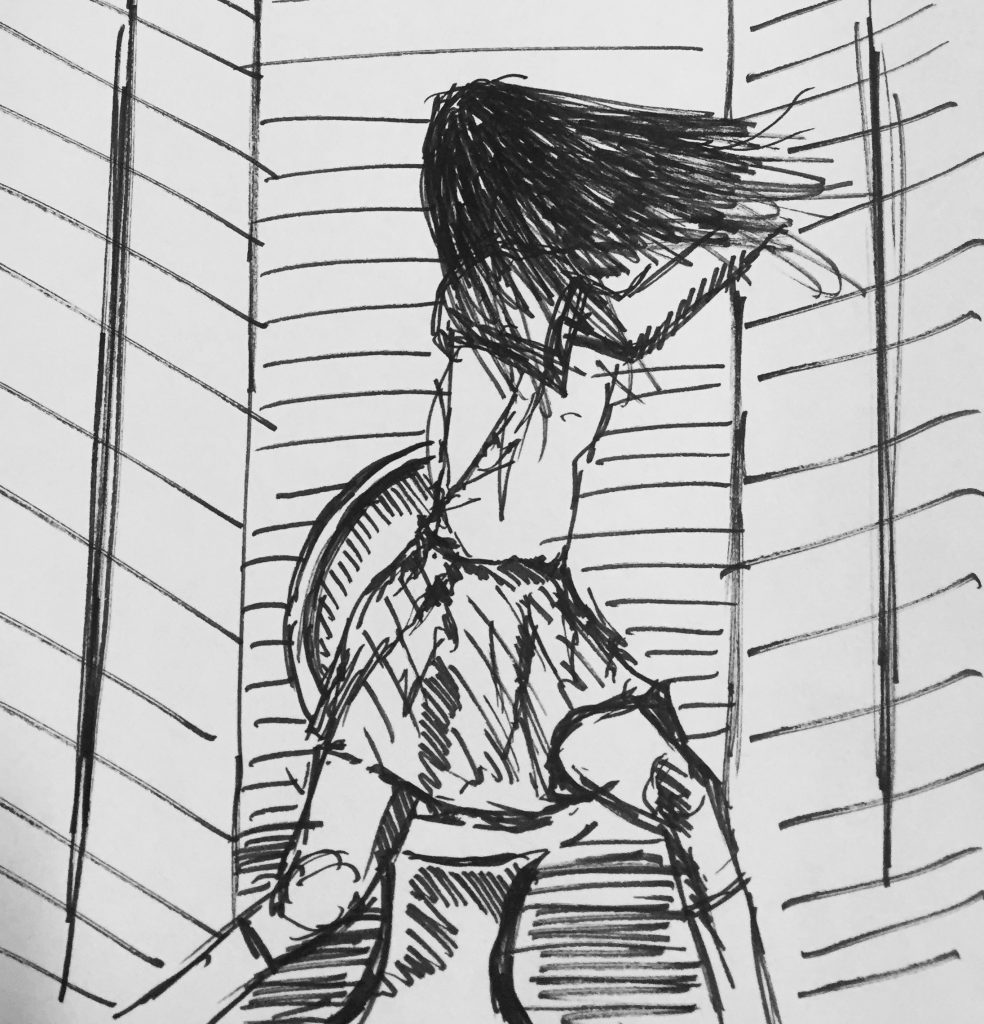
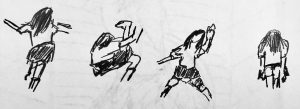
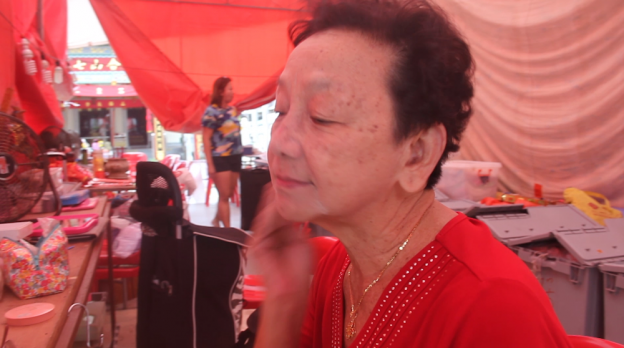
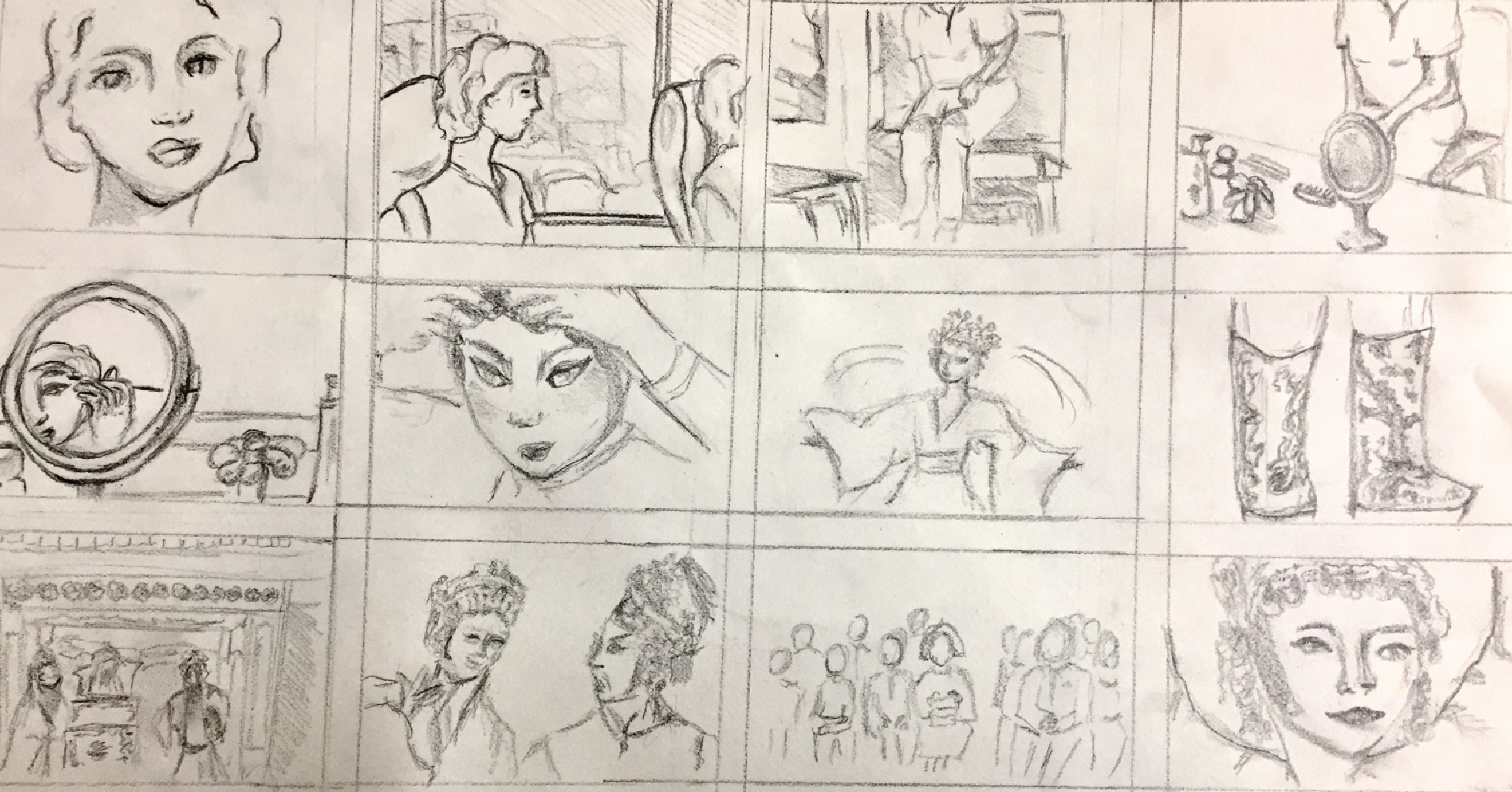
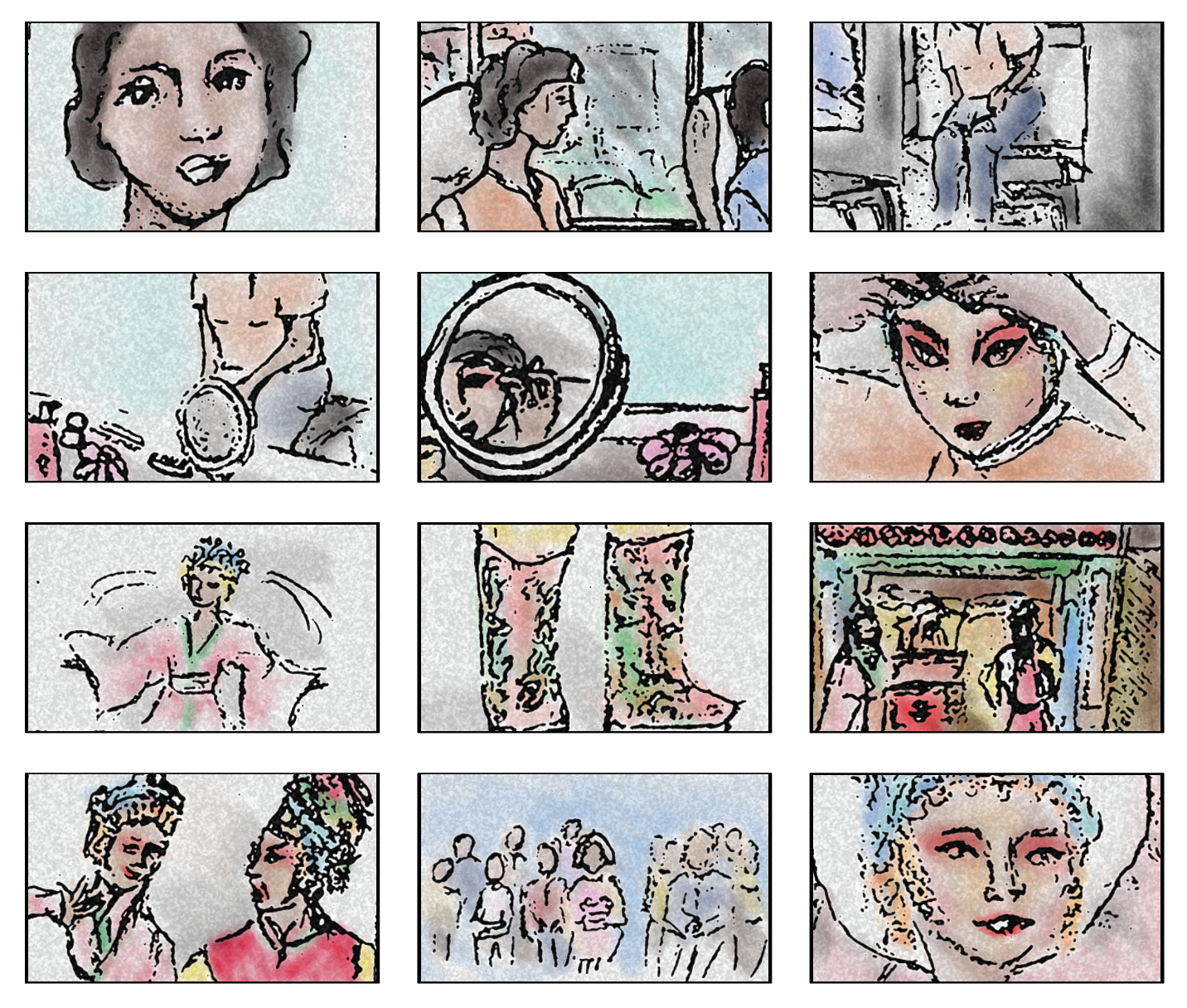
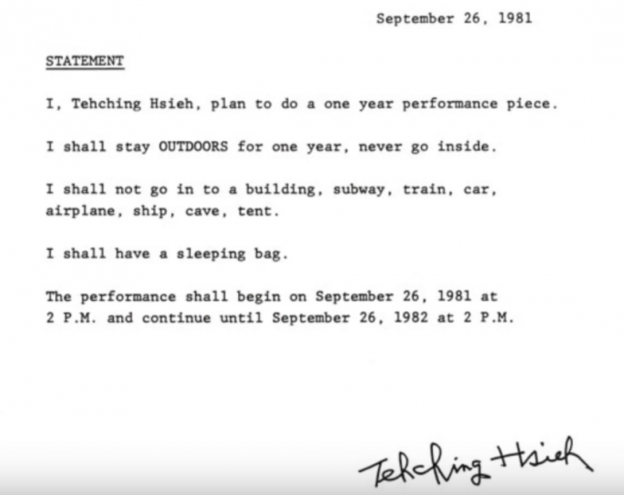
 *changing desktop screen
*changing desktop screen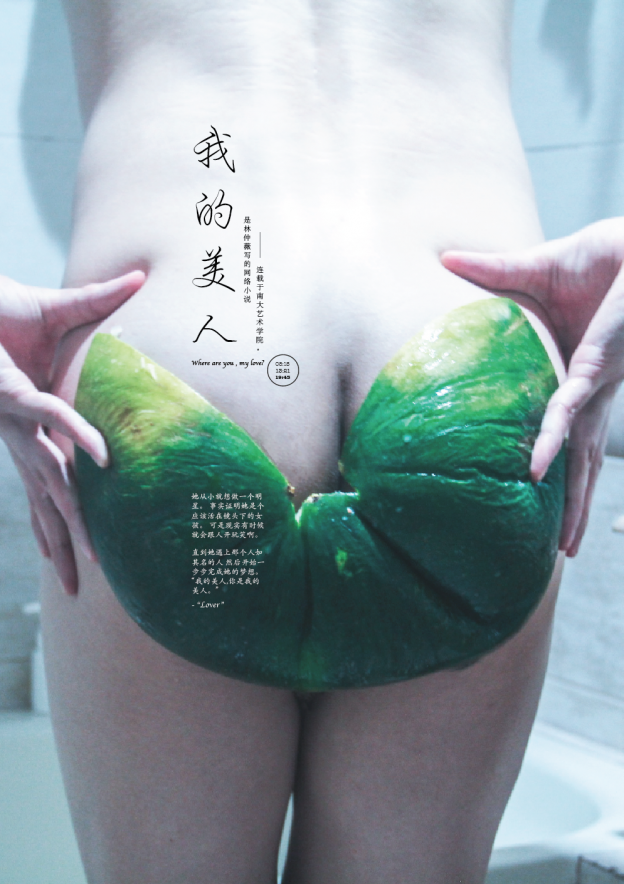



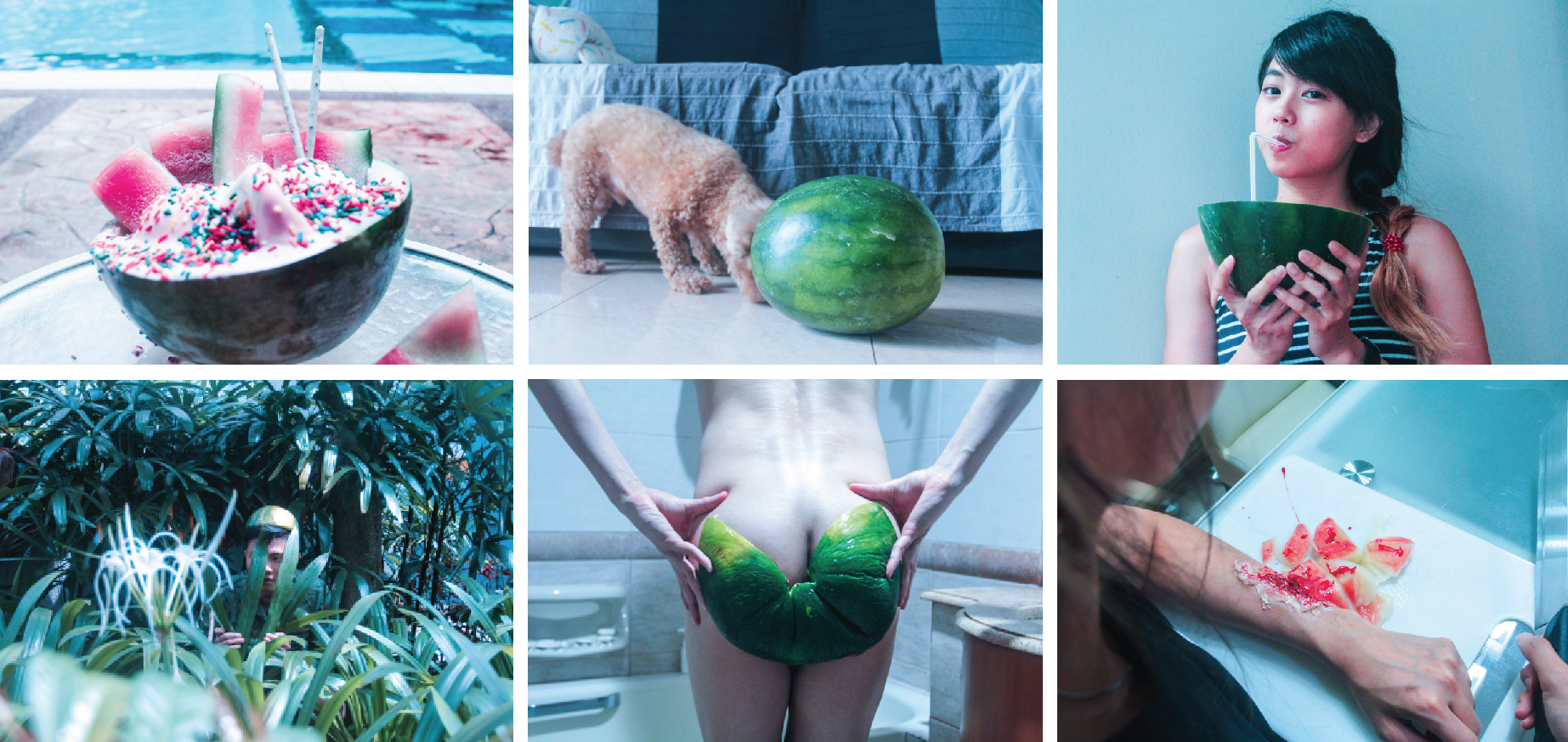
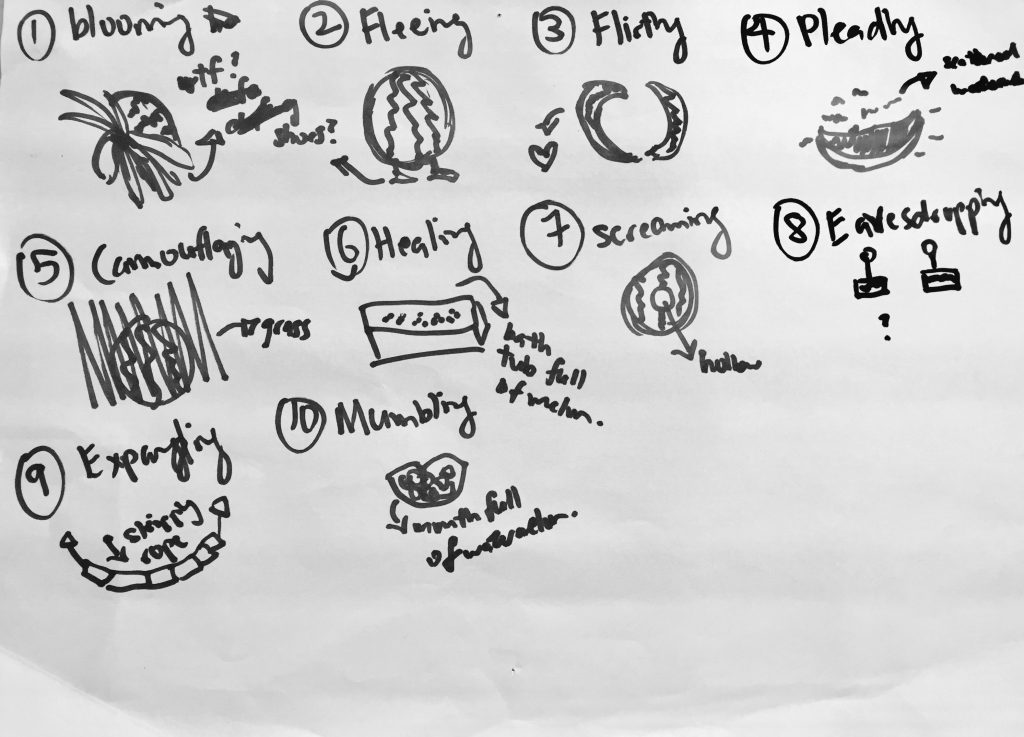
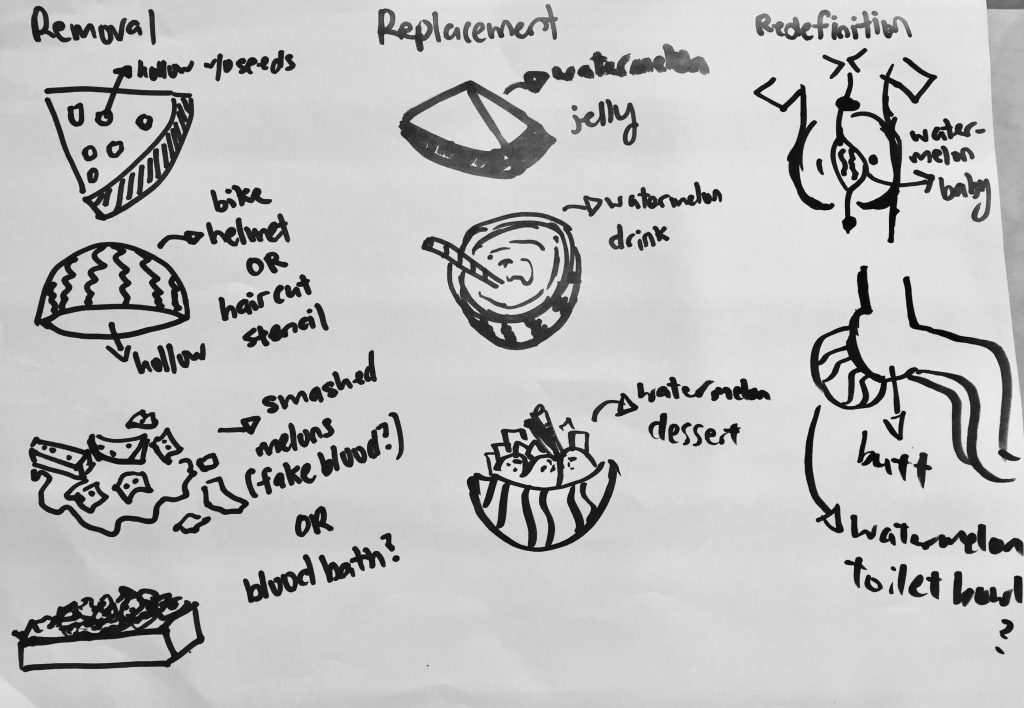
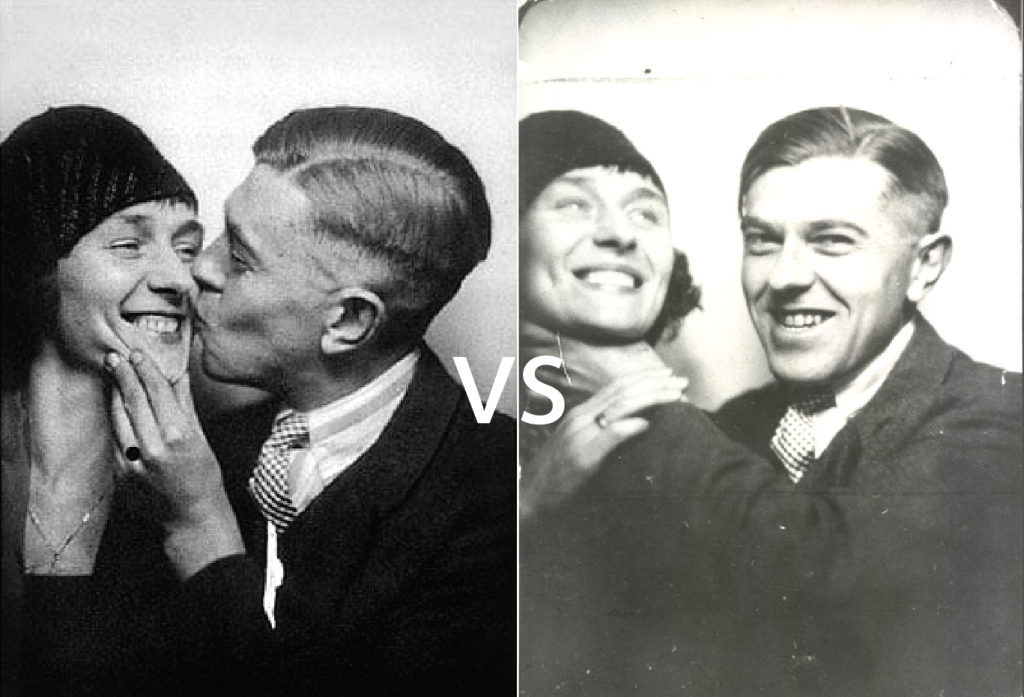
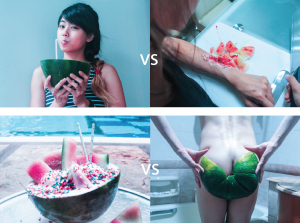
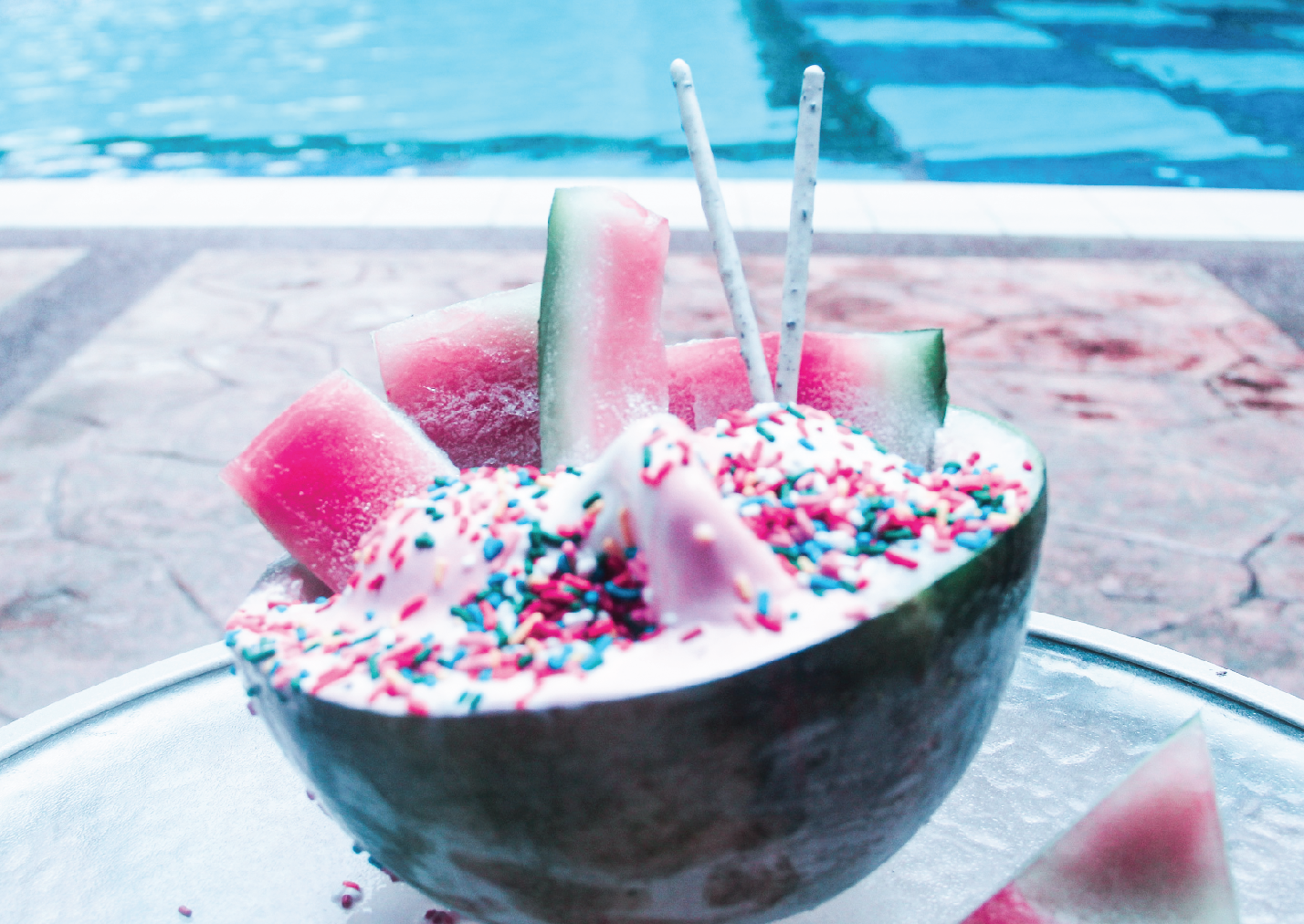
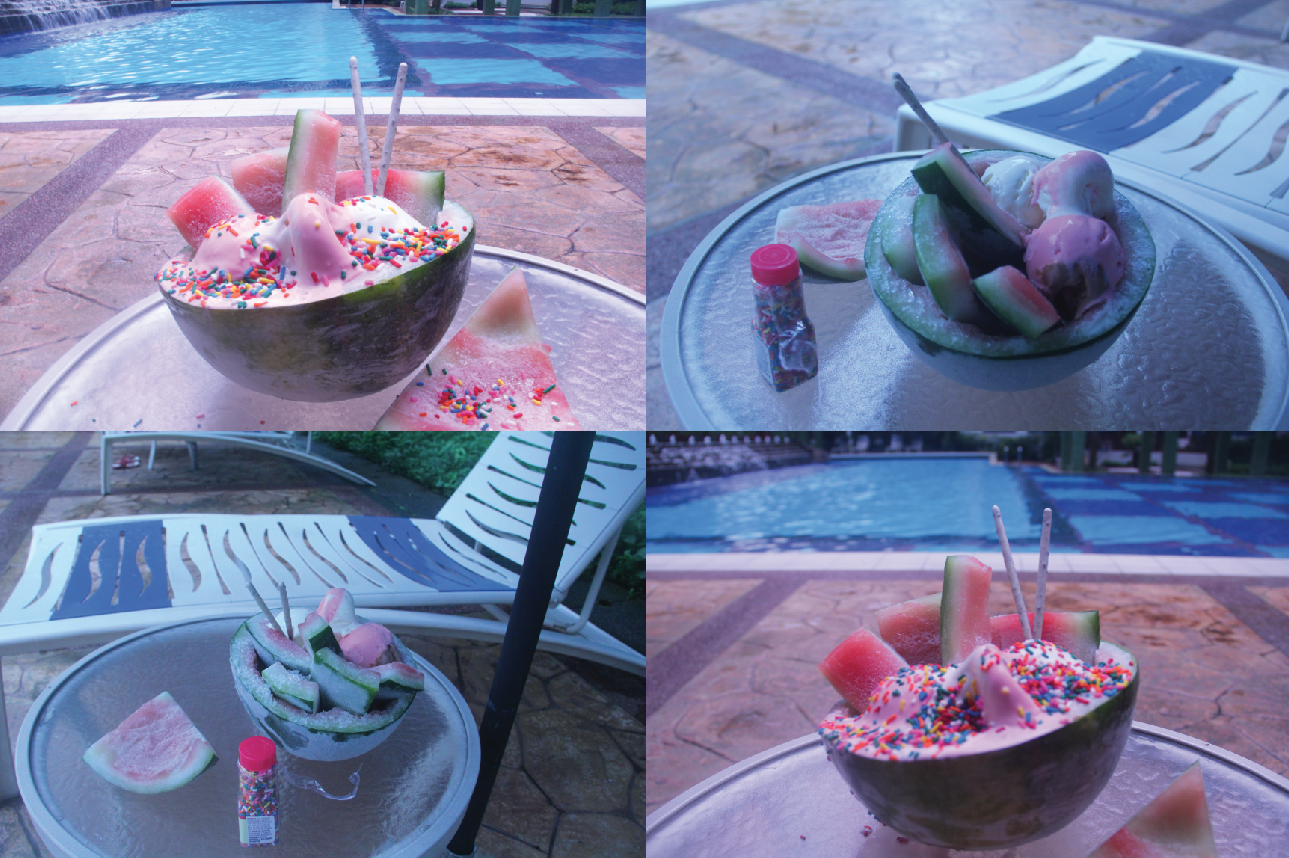
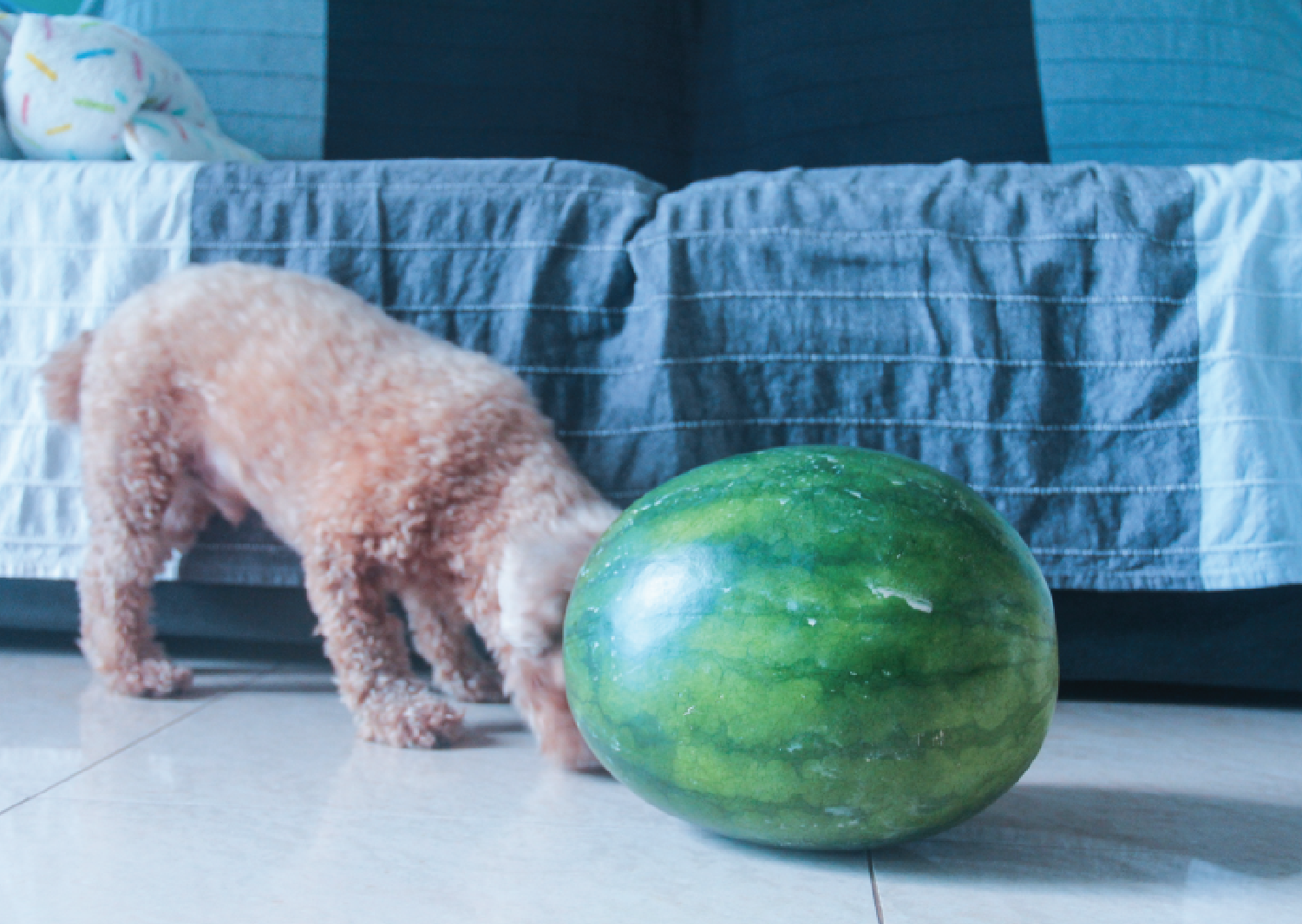
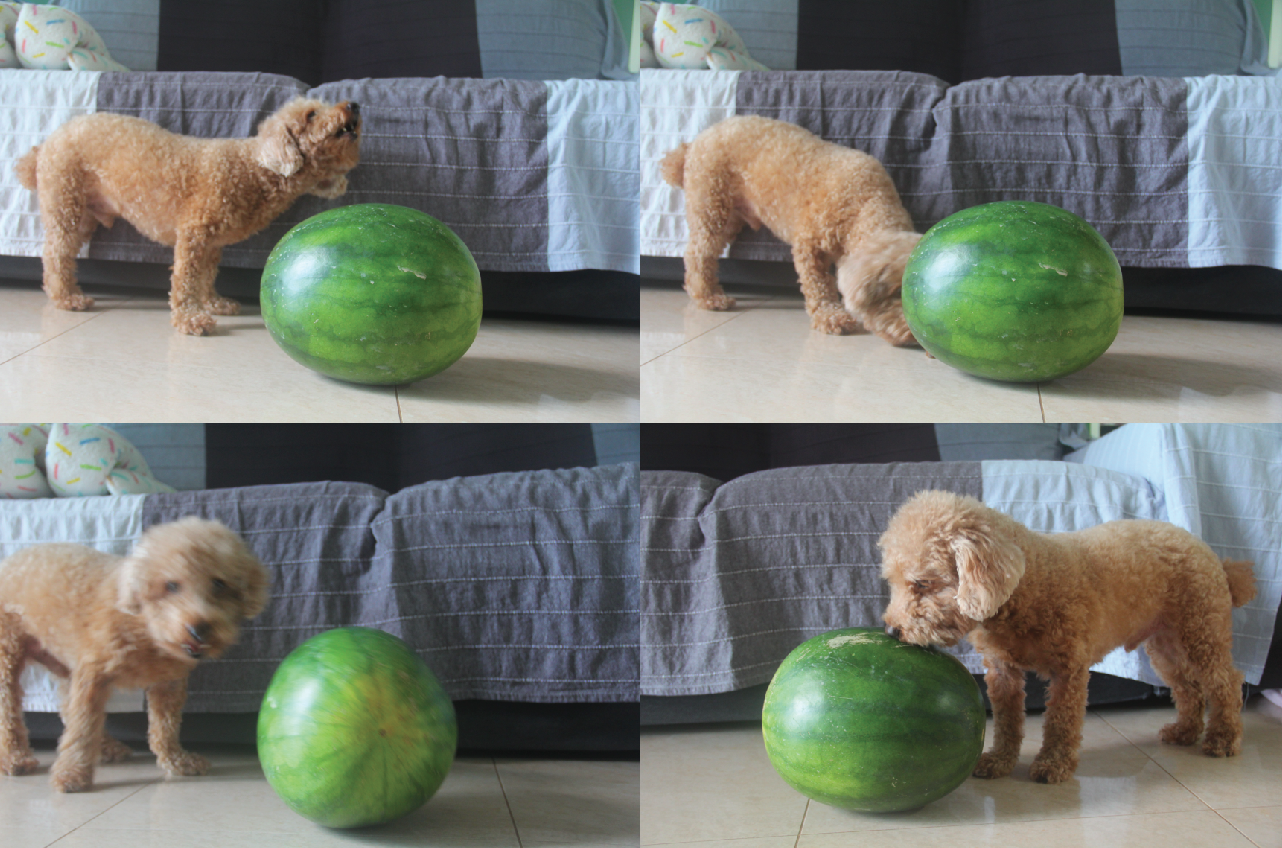
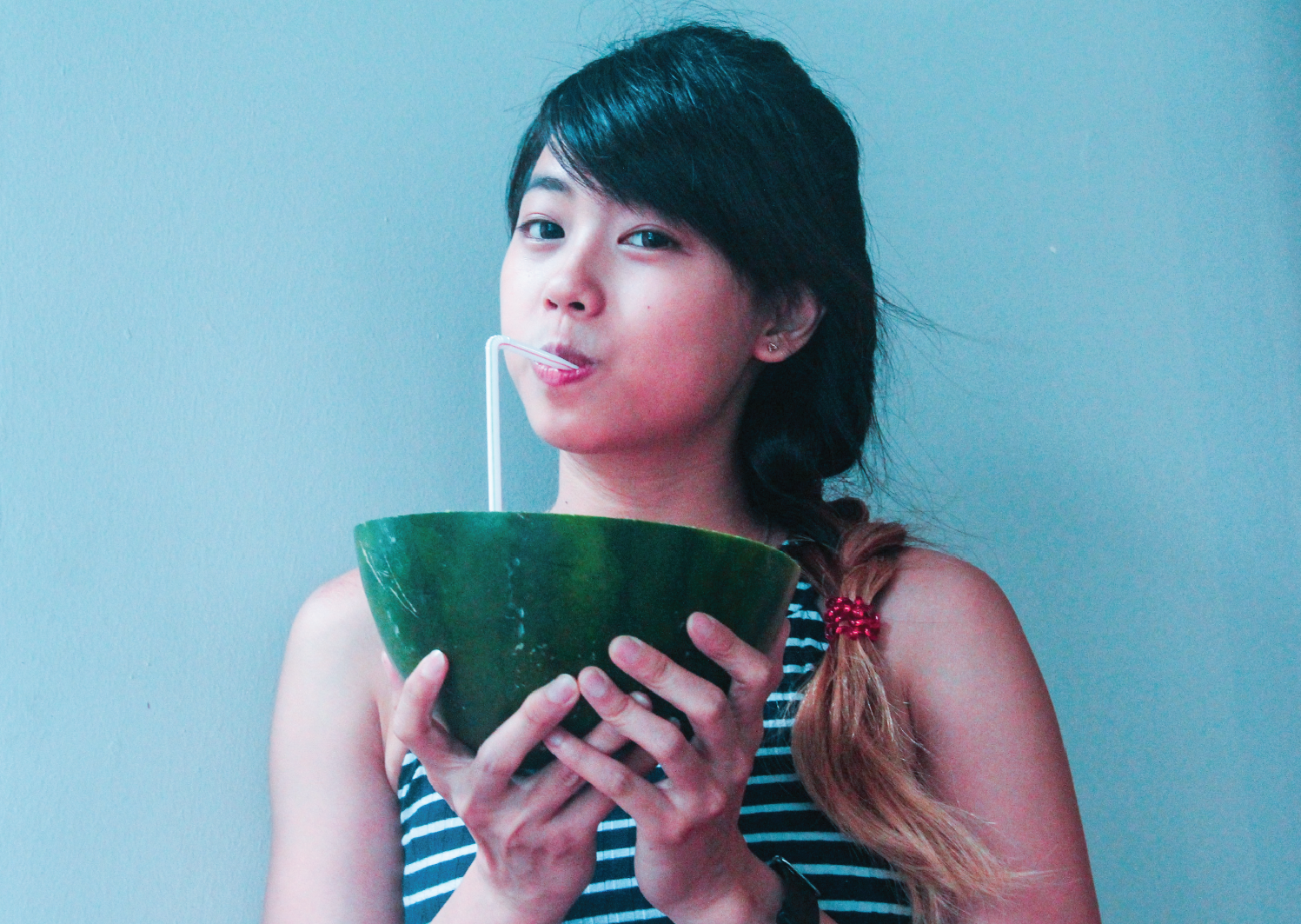
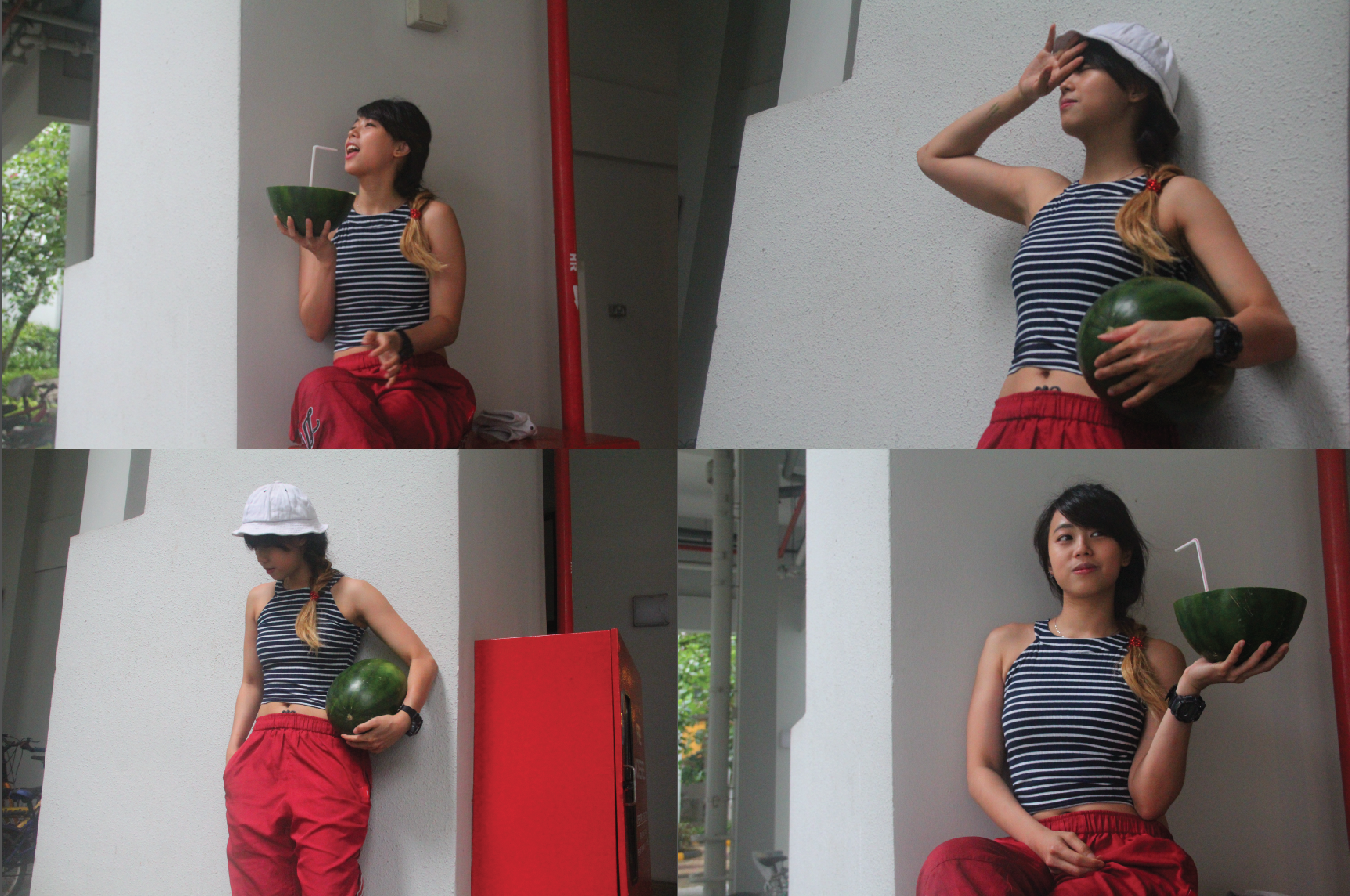
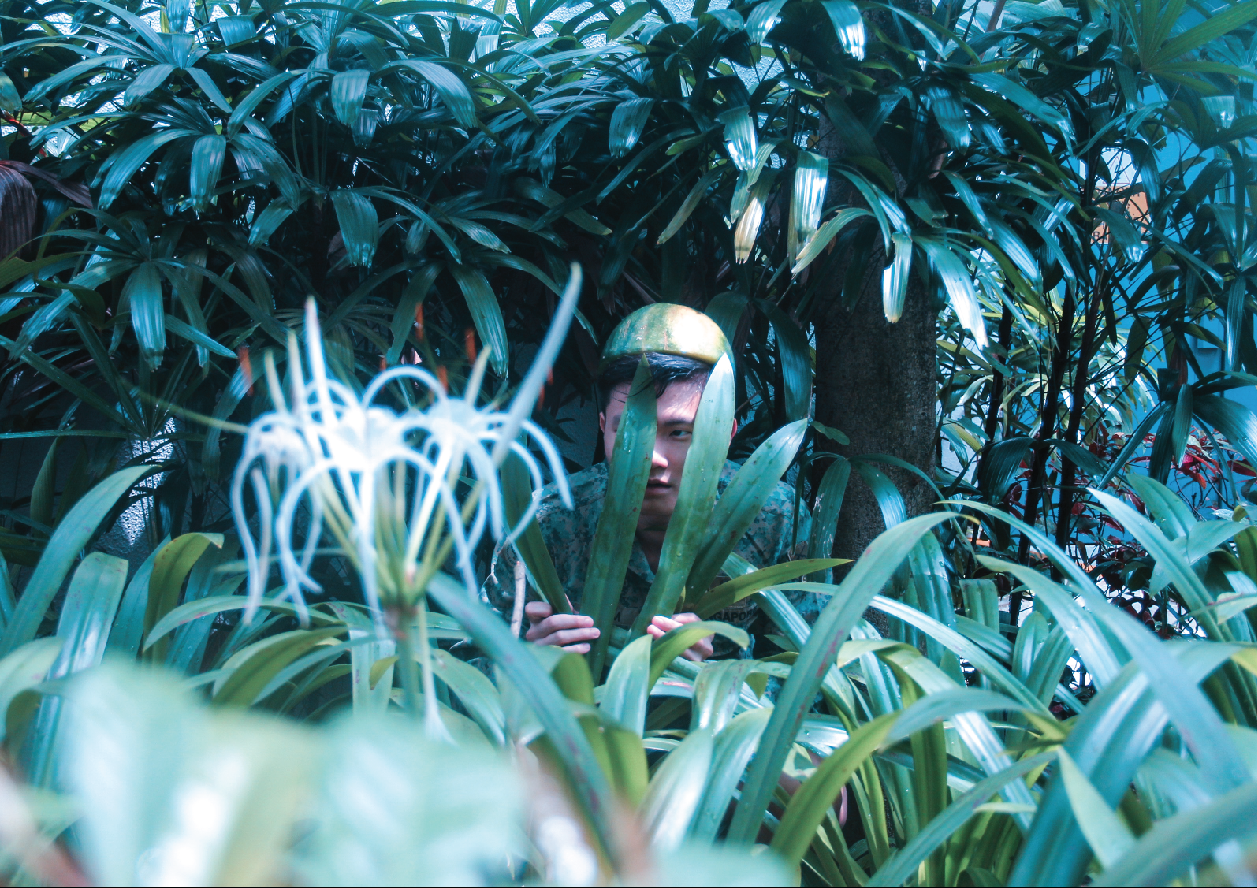

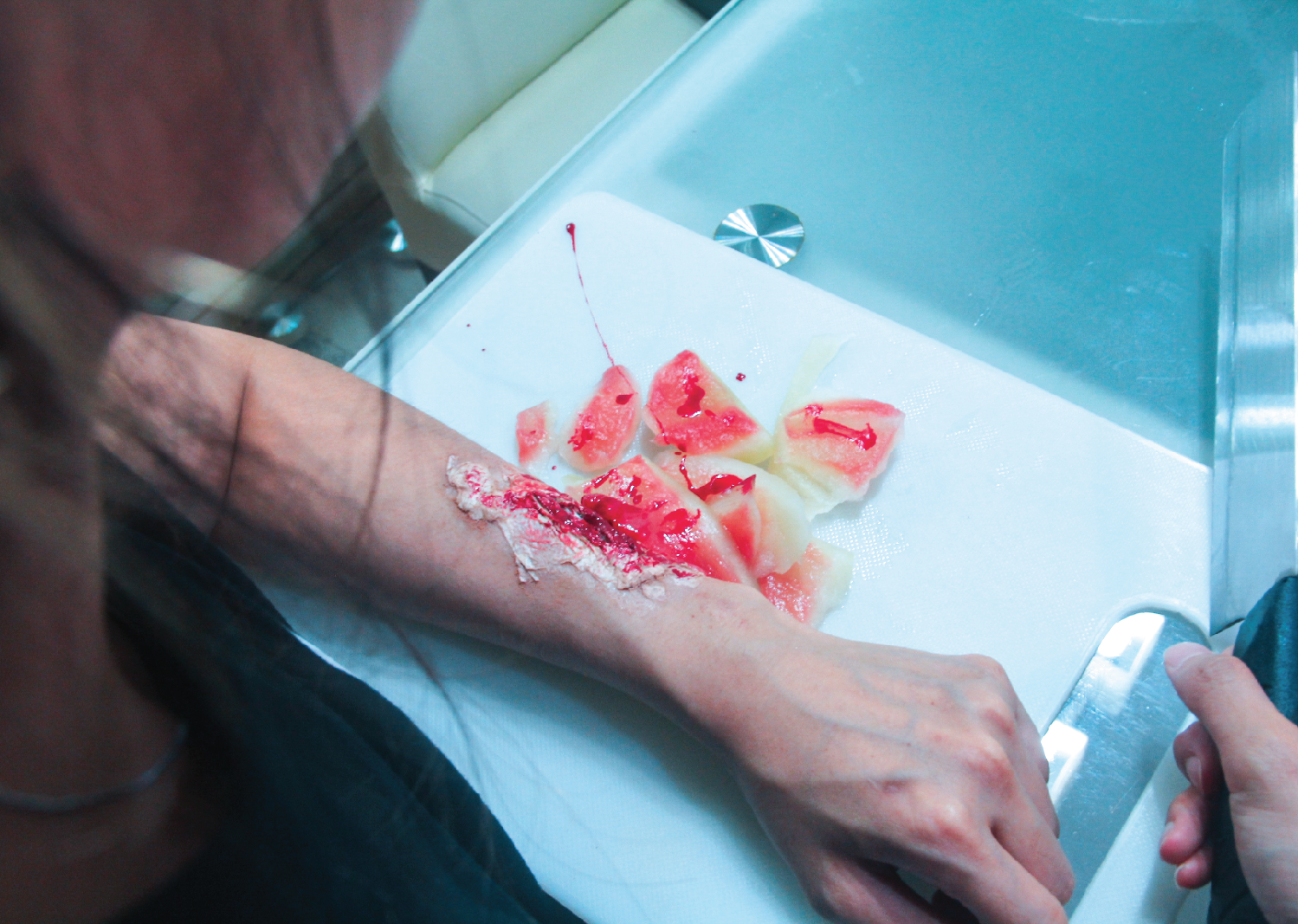
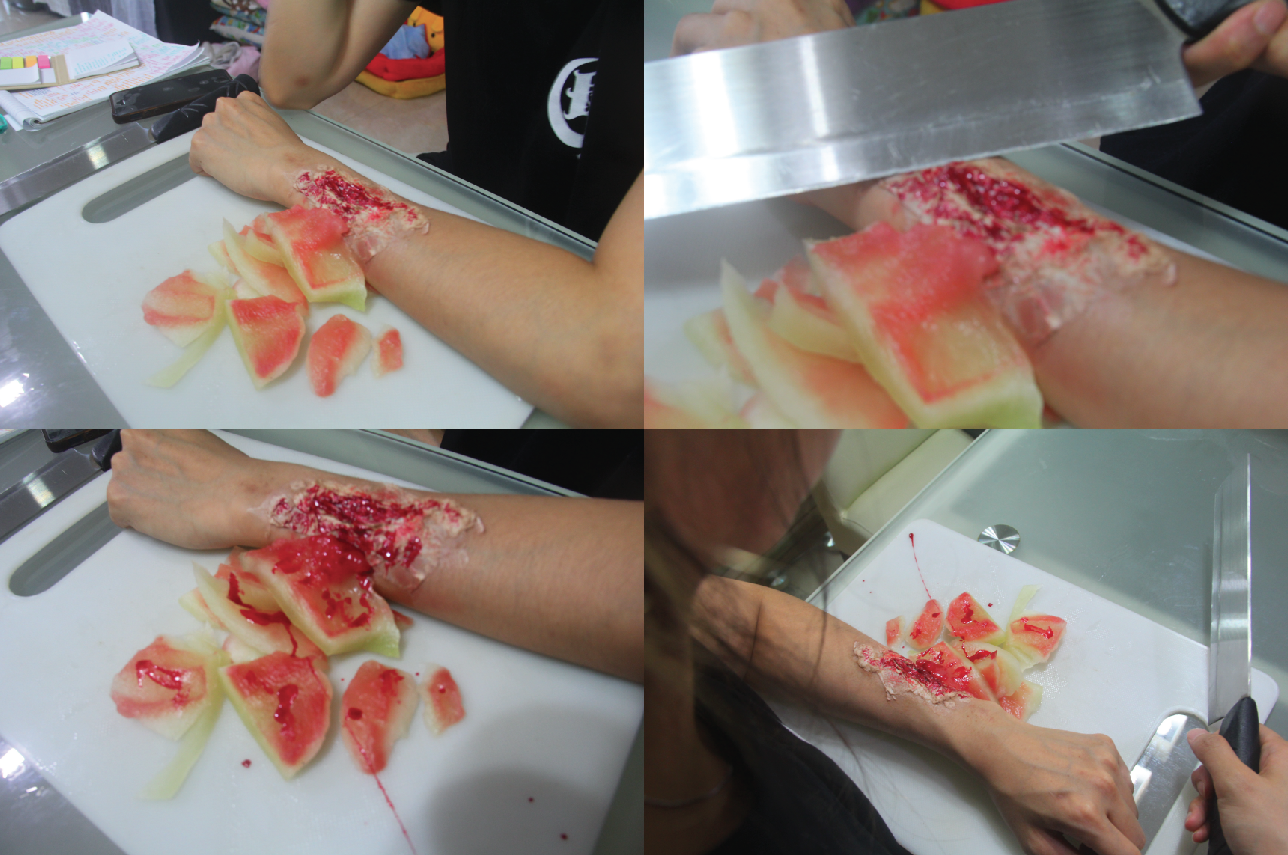 In the test shots, I find it hard to connect the different elements (wound, watermelon, knife, model, chopping board) all together into the photograph. Until I found the right angle to take shot the photo; the back shoulder of the model.
In the test shots, I find it hard to connect the different elements (wound, watermelon, knife, model, chopping board) all together into the photograph. Until I found the right angle to take shot the photo; the back shoulder of the model.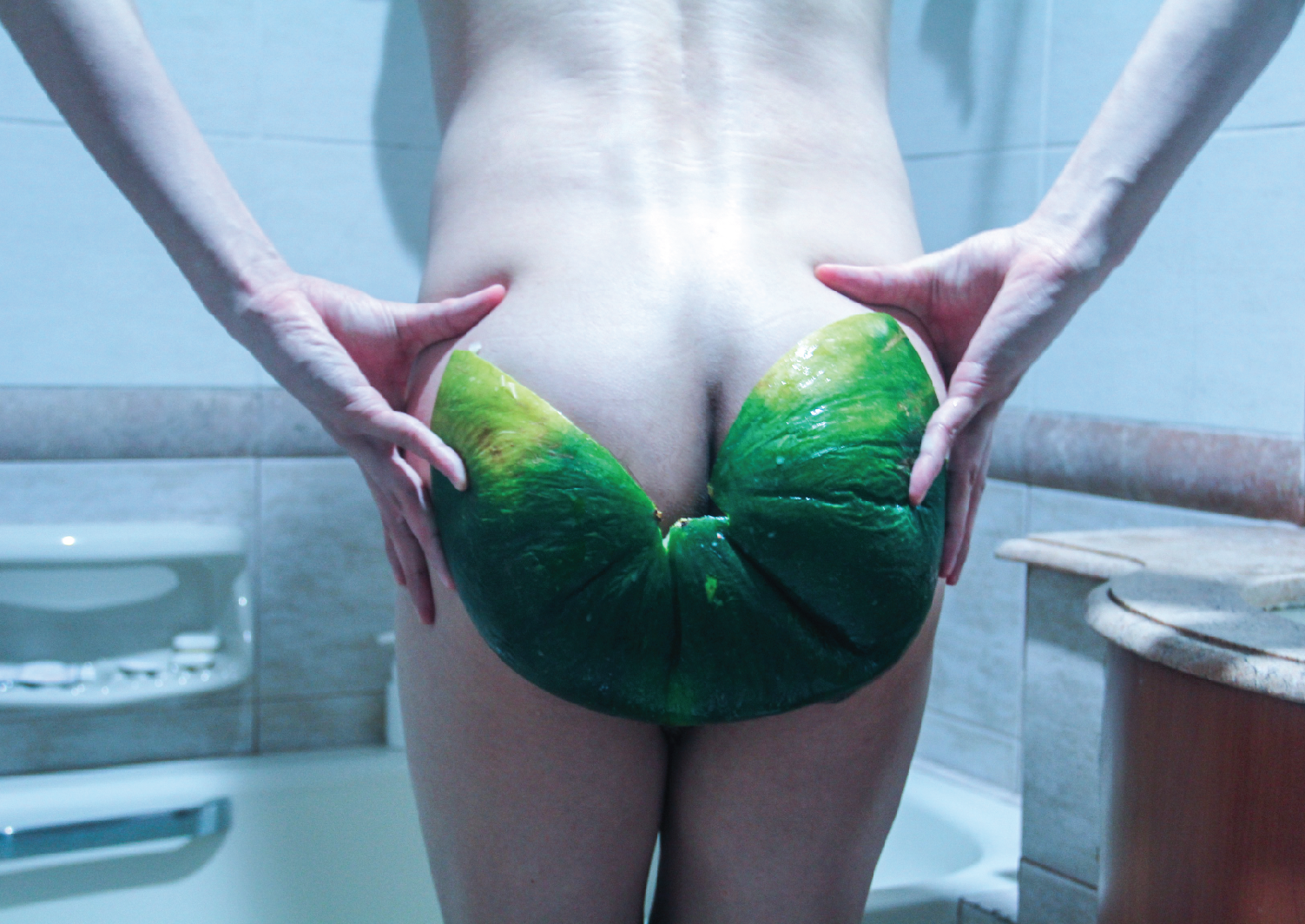
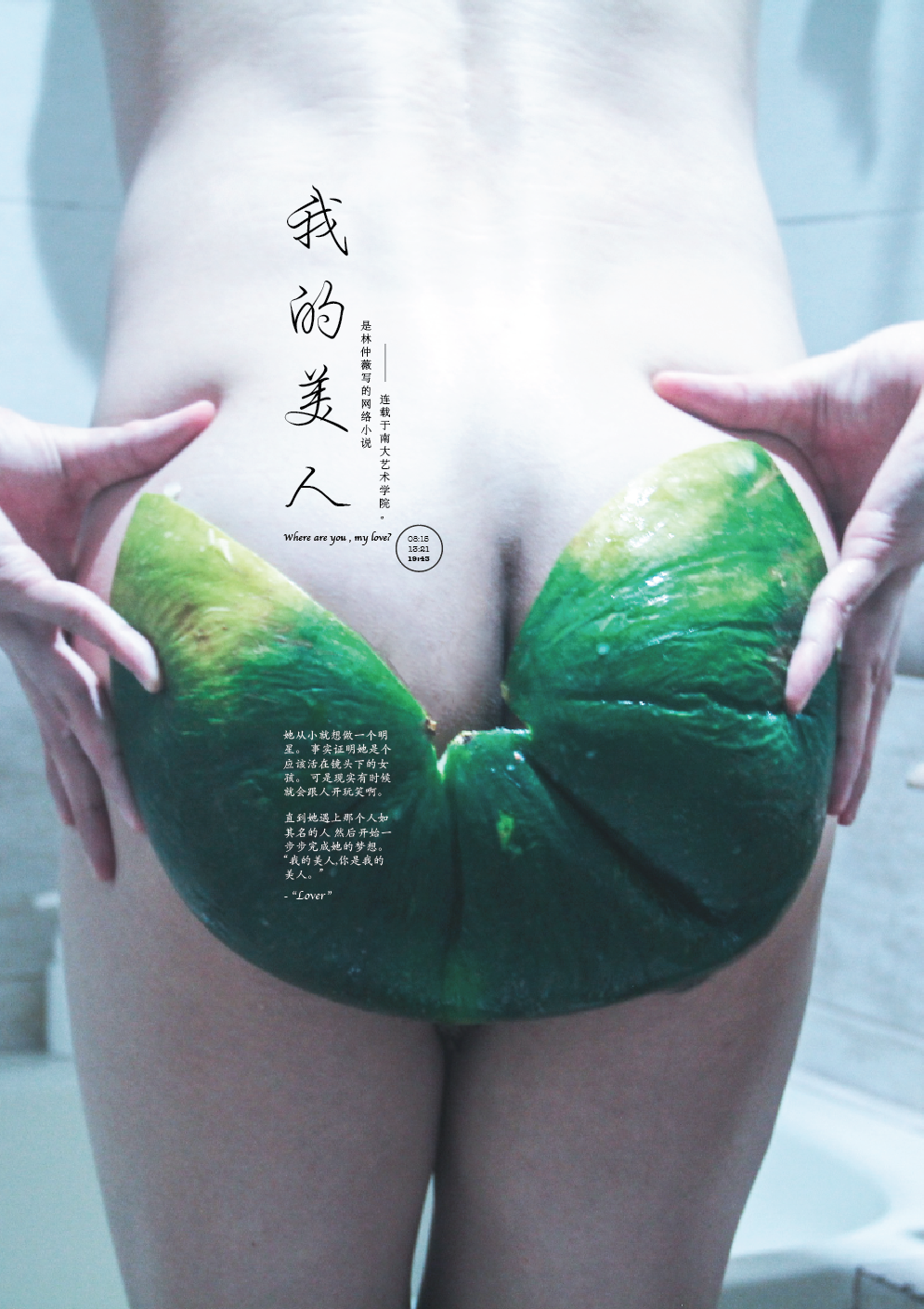 “我的美人“
“我的美人“